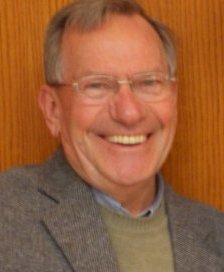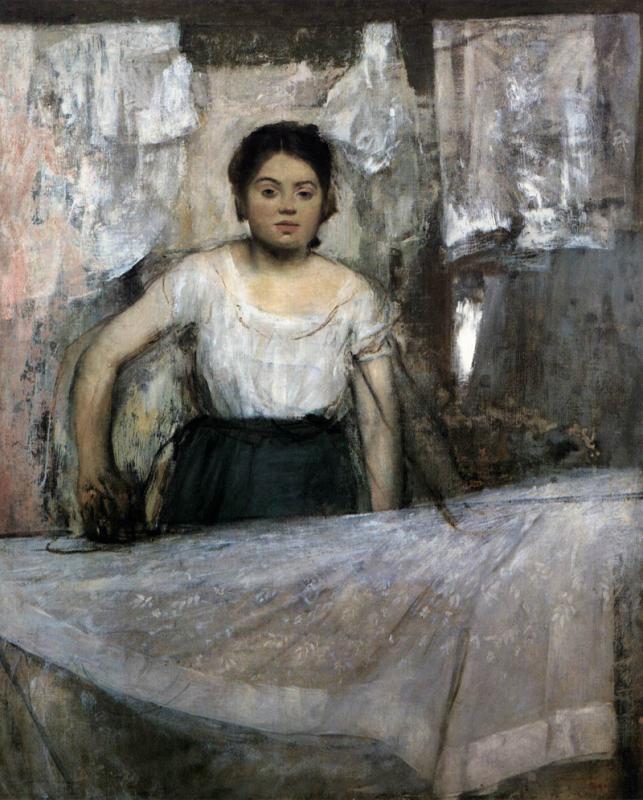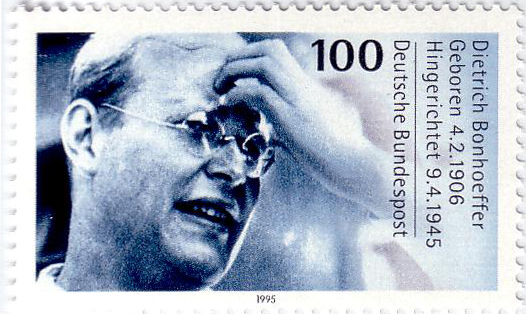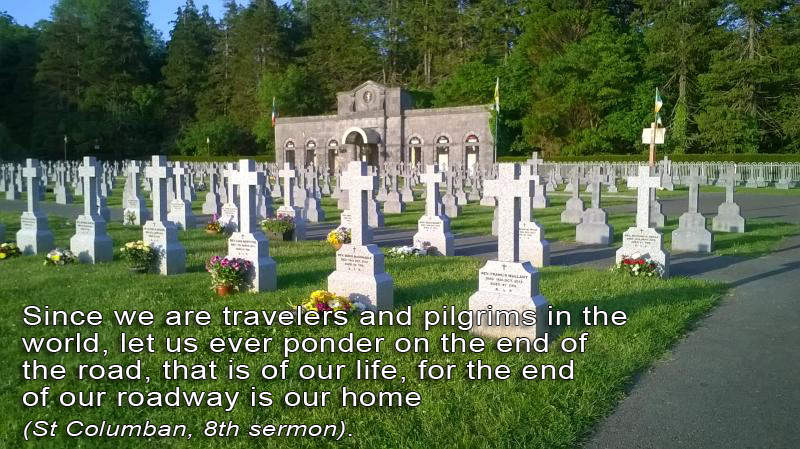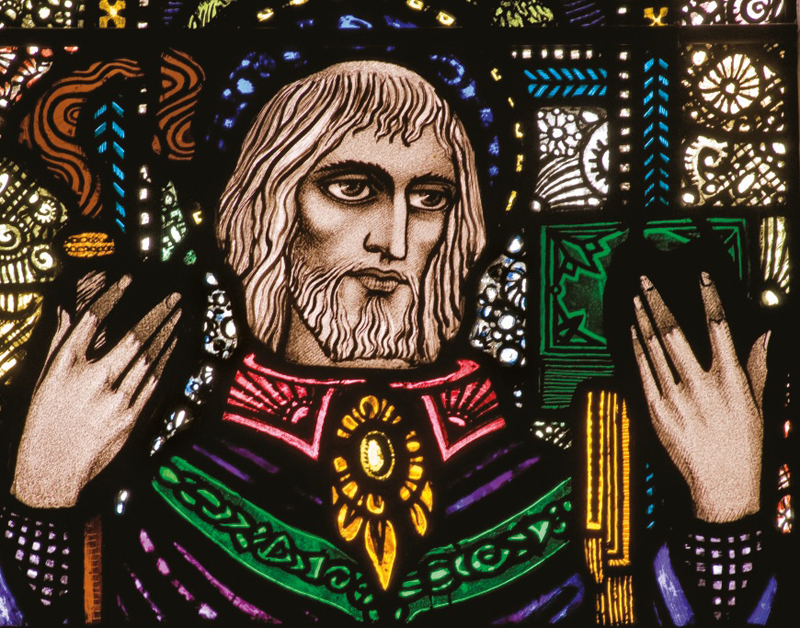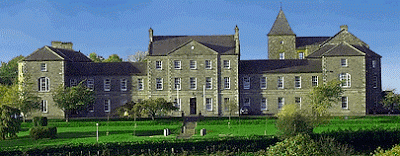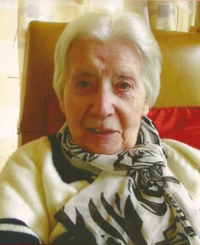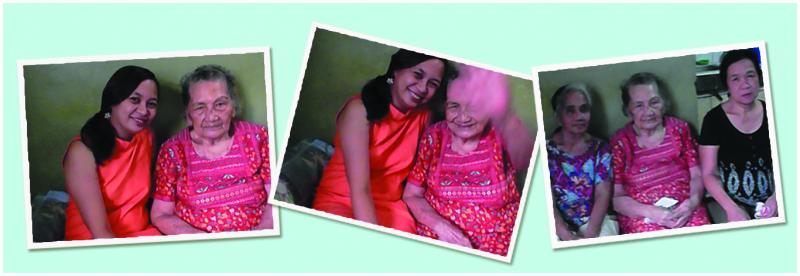Misyon Online - November-December 2015
PULONG NG EDITOR

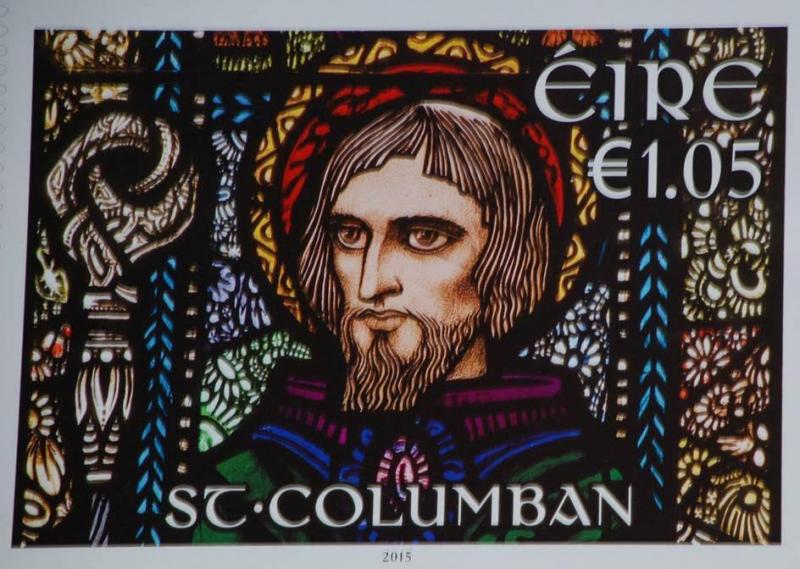
The death notice of Columban Fr Patrick J. Crowley who died suddenly on 25 October notes: ‘Late of Japan, Australia, New Zealand, Britain and Ireland.’ Fr Crowley’s obituary appears in this issue as does that of Columban Sister Mary O’Dea. Her death notice notes ‘USA and Peru’. Her brother Father Donal, who preached at her funeral Mass, spent more than 60 years here in the Philippines. Before he moved back to Ireland two or three years ago he pointed out to us that he was one of relatively few Columban missionaries who spent all their lives on mission in one country.

The Subanens Live The Christmas Story
by Fr Vincent Busch
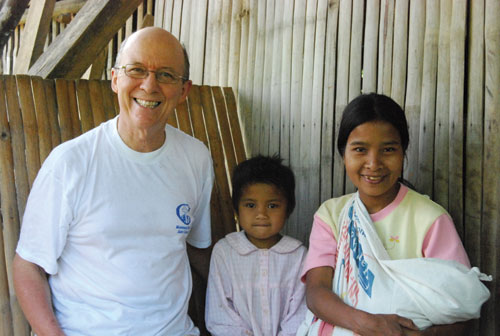
The Gospels give us a good idea of the joys, fears and struggles that Mary and Joseph experienced that first Christmas. Jesus was born after his parents had walked 100 kms often over rugged terrain. Mary gave birth in a stable because there was no room for them in the Inn. Then, after visits from shepherds and wise men, Mary and Joseph had to flee to avoid Herod’s soldiers. Over the past several decades the Subanen people have experienced similar joys, fears, and struggles. When Subanens hear the Christmas story they say Joseph and Mary are like us.

I Met St Joseph In Manila
By Columba Chang Eun-Yeal
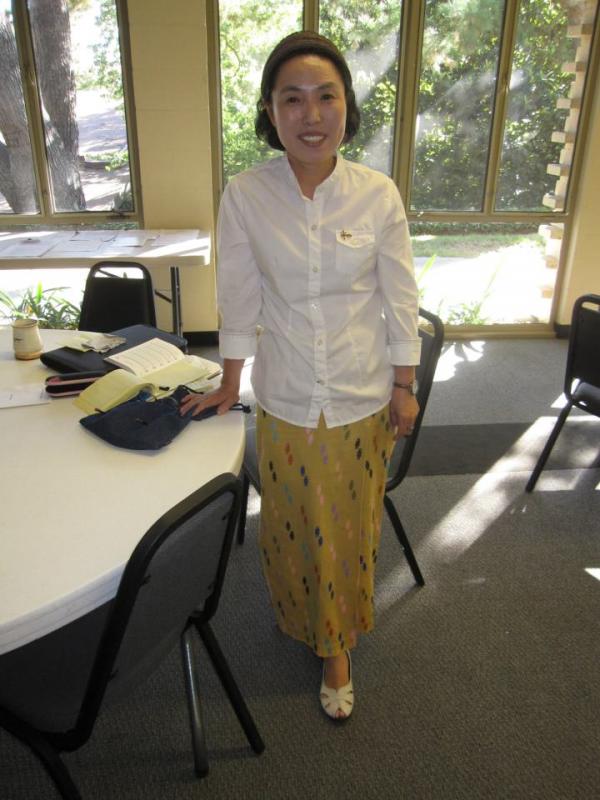
Columba Chang, 2012
We first published this article in the November-December 2003 issue of MISYON. It is a story that can be told and re-told over and over again. The author, a Columban Lay Missionary from Korea who was assigned to the Philippines for many years, is now based in Myanmar.
There may be as many as seven million Filipino overseas workers spread all over the world. They greatly help our country’s economy by the money they send home. However sometimes we seem to take them for granted, thinking that they have an easy life abroad. Read Aling Maria’s story below and find out the dangers our OFWs face and the abuses they experience. We thank ‘Mang Pepe’ for his help in writing this article in which we’ve changed the names.

A Journey Away From Home
My Experience on First Mission Assignment
By Erl Dylan J. Tabaco
PART TWO

The author holding the flag of Peru in Macchu Picchu
We published the first part of this article in our September-October issue. The author is a member of the Missionary Society of St Columban and is currently in Peru on his two-year First Missionary Assignment (FMA) as part of his preparation for the priesthood. He is from Cagayan de Oro City, Philippines. He went to Peru in 2014.
Coming to Peru on First Mission Assignment (FMA) was life-changing. Being a missionary opened my eyes to the challenges that I would be facing. Learning a new language is not as easy as adjusting to weather and time differences. Learning the basics of Spanish from phonetics to grammar brought me back to my early childhood experience when I was still trying to mimic sounds that I had just heard.

St Columban, My Brother
By Fr Ray Scanlon
|
A recent visitor to our editorial office in Bacolod City was Fr Raymond F. Scanlon, a Columban from Melbourne, who worked for many years in Korea. He is the current Vice-Director of the Region of Australia and New Zealand. We published this article five years ago but it is very appropriate for the 1,400th anniversary of the death of St Columban in Bobbio on 23 November 615.
Until I did the pilgrimage I did not know much about St Columban. To me he was a mythical figure of ages long ago. One who was not so human and who had extraordinary powers, superhuman ideals and expectations.
As we travelled in St Columban’s footsteps we heard a number of accounts of his life. I began to understand and admire him. He became alive and real rather than a distant historical figure.

Cheerful Givers
‘Each of you must give as you have made up your mind, not reluctantly or under compulsion, for God loves a cheerful giver’, St Paul tells us (2 Corinthians 9:7). God reveals himself through ‘cheerful givers’, who can be found on opposite sides of the world. Cynthia Empleo of our Mission Office in Manila tells us the story of the long involvement of Mrs Leonor A. Tomines, now 93, with the Columbans, for many years as a laundry woman like the woman in the painting by Degas above, and for many more years as a benefactor. On the other side of the world, in Ireland, Columban Sr Mary Nolan tells us the story of Kathleen Hogan, who grew up in difficult circumstances and was a great supporter of the Columban Sisters. Kathleen has now gone to her reward. Whenever we meet persons such as Leonor A. Tomines and Kathleen Hogan we can say with Sister Mary, ‘I had the privilege of coming to know the greatness of one of God’s little ones.’ |

Columban: A Man for All Times
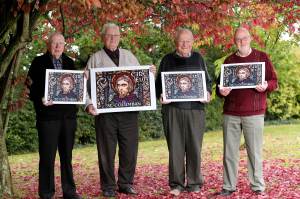
Irish stamp in honor of St Columban
This is the second of two articles on St Columban by a Columban priest who wishes to remain anonymous. The first appeared in our September-October 2015 issue.
The parish church where I come from has parish records dating back to the early 19th century. As a young altar server, I got a job from the sacristan during the summer school-holiday months, to help Irish Americans and other visitors trace their family ancestors. I would open the pages of Baptismal and Marriage Registers, and the smell of old books would perfume the air. Our visitors manifested a curiosity and an inherent longing to connect with their past as they became immersed in piecing together family history. You could almost see them become one in mind and spirit with persons they had heard of, but had never met in the flesh. They were family.

Fr Bernard Toal: First Columban Centenarian
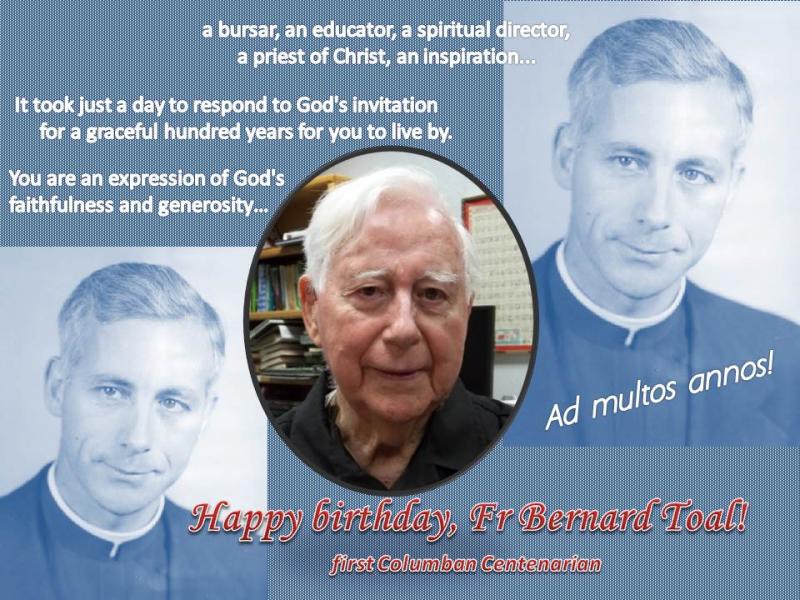
Fr Bernard Toal, the first Columban to reach the age of 100, was born in Philadelphia, Pennsylvania, USA, on 17 October 1915 but grew up in nearby Gloucester, New Jersey. He was ordained in Buffalo, New York, on 18 December 1943. Because of World War II he spent the early years of his priesthood in the USA.

Peru: the experience that changed my life
By Emmanuel Trocino
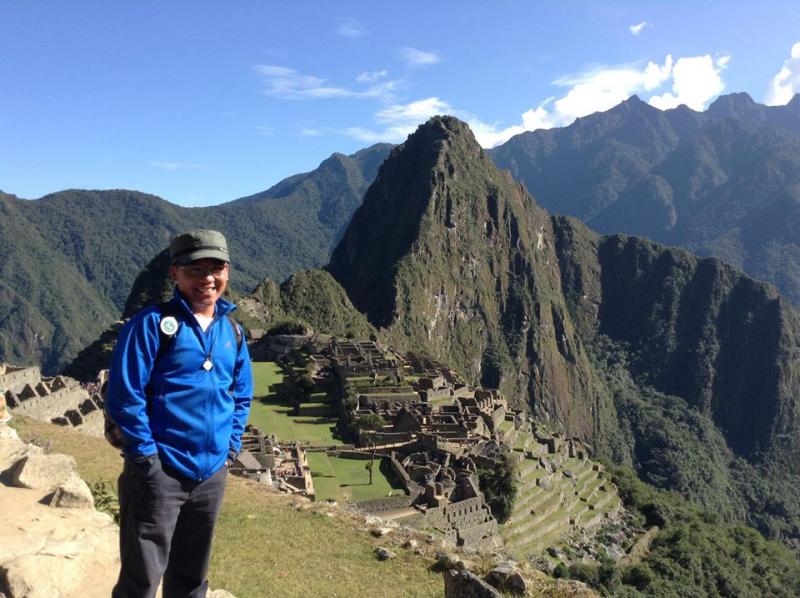
Welcome to Peru, Land of the Incas (‘Land of the Kings’). Many would say that you’ve never really been to this resplendent country until you’ve set foot in the majestic and incomparable Machu Picchu. I was able to visit this Incan legacy. But there’s more to Peru than just visiting its archaeological sites, being amazed at its mountains, jungles and deserts, and getting stuffed with local delicacies. If you stay awhile in Peru you will fall in love with its culture, its tradition, its faith and its people.
I am a Columban seminarian from Pulupandan, Negros Occidental, on First Missionary Assignment (FMA) in Peru. FMA is part of our formation as future Columban priests. We leave our homeland to taste what it’s like to be a missionary in a foreign land, crossing boundaries, experiencing an unfamiliar culture and encountering God in a new face and language.

A Sprouting Hope for Boracay
By ‘Shane’
The author, who is known to the editorial staff here in Bacolod City, prefers to use a pen-name.
Boracay Island, Philippines [Wikimedia]
Boracay is just a tourist destination for many. But for people like me, our world revolves around it. I came here in January 2007 at the encouragement of my uncle to find work here, to be independent and to try to see what I wanted for myself. With my cousin’s assurance of the possibility of a job, I left my small business in Negros and came here instead. I found it simple to live here. No need to wear something extravagant just fit in. Rich or poor, you could enjoy yourself and be friends with visitors from around the globe.
Boracay was just an innocent island for me then. But I was to discover in time that some dark things were and are happening. Prostitution is rampant. Some are infected by AIDS. Other issues include corruption, crime and drugs. It is quite difficult to resolve these issues. It needs government intervention. The situation may seem hopeless but we don’t give up.

PEACE BY PEACE |
|
Through the call of Jesus people become individuals. Willy-nilly, they are compelled to decide, and that decision can only be made by themselves. It is no choice of their own that makes them individuals: it is Christ who makes them individuals by calling them. Every person is called separately, and must follow alone. Dietrich Bonhoeffer, The Cost of Discipleship |

Columbans ‘Who Have Gone Before Us With The Sign Of Faith’ - December 2014 – October 2015

Pulong ng Editor


The death notice of Columban Fr Patrick J. Crowley who died suddenly on 25 October notes: ‘Late of Japan, Australia, New Zealand, Britain and Ireland.’ Fr Crowley’s obituary appears in this issue as does that of Columban Sister Mary O’Dea. Her death notice notes ‘USA and Peru’. Her brother Father Donal, who preached at her funeral Mass, spent more than 60 years here in the Philippines. Before he moved back to Ireland two or three years ago he pointed out to us that he was one of relatively few Columban missionaries who spent all their lives on mission in one country.
There are many different reasons why a missionary might move from one country to another. It might be because of a new mission taken on by the Columbans. It might be for reasons of health. It might be because a particular missionary is expelled from his country of mission, as has happened to quite a few, particularly those who worked in China before.Fr Michael A. Healy, who died in 2012 aged 91, was the only Columban, as far as I know, to have been expelled from two countries, China and Burma, now known as Myanmar.
But Columban missionaries are working again in China and Myanmar and there are Columban seminarians from both of those countries.
St Columban himself, who died 1,400 years ago on 23 December in Bobbio, northern Italy, was also expelled by a king who didn’t like the implications of the Gospel message that the Irish monk was preaching.
The last third of St Columban’s life of 72 to 75 years – we’re not sure of the date of his birth – was spent on Peregrinatio pro Christo, on a Pilgrimage for Christ, that took him probably through Cornwall in the southwest of Britain on his way to the European Mainland where he was to found monasteries and travel in modern-day France, Switzerland, Austria and Italy. So his many followers today, Columban priests, Sisters and Lay Missionaries who have found themselves moved from one country to another or from one place to another in their country of assignment, are imitating our great Patron Saint.
It is also part of the reality of being a missionary that one is often better known in the country or countries where one is working than in one’s native place. The same applies to St Columban. Pope Benedict in a general audience on 8 June 2008 began with these words: ‘Today I would like to speak about the holy Abbot Columban, the best known Irishman of the early Middle Ages. Since he worked as a monk, missionary and writer in various countries of Western Europe with good reason he can be called a "European" Saint. With the Irish of his time, he had a sense of Europe's cultural unity. The expression "totius Europae - of all Europe", with reference to the Church's presence on the Continent, is found for the first time in one of his letters, written around the year 600, addressed to Pope Gregory the Great.’
But Columban Fr Aidan Larkin in a biography of the great Irish missionary points out, ‘St Columbanus is the best known and best loved of the Irish saints in continental Europe, especially in France, Italy, Austria, Germany and Switzerland . . .sadly, he is less well known in Ireland.’
May the words from St Columban’s Instructiones XI, which Pope Benedict quoted in his audience, be an inspiration to all involved today in whatever way under the patronage of St Columban in the mission of the Church: ‘If man makes a correct use of those faculties that God has conceded to his soul, he will be likened to God. Let us remember that we must restore to him all those gifts which he deposited in us when we were in our original condition. He has taught us the way with his Commandments. The first of them tells us to love the Lord with all our heart, because he loved us first, from the beginning of time, even before we came into the light of this world.’
St Columban, pray for us.
|
The
stamp issued by An Post was designed by Steve Simpson. He based his design on a stained-glass window in St Joseph’s Monastery, Roscrea, County Tipperary, Ireland, by famed Irish artist Harry Clarke. |
A Sprouting Hope for Boracay

By ‘Shane’
The author, who is known to the editorial staff here in Bacolod City, prefers to use a pen-name.
Boracay Island, Philippines [Wikimedia]
Boracay is just a tourist destination for many. But for people like me, our world revolves around it. I came here in January 2007 at the encouragement of my uncle to find work here, to be independent and to try to see what I wanted for myself. With my cousin’s assurance of the possibility of a job, I left my small business in Negros and came here instead. I found it simple to live here. No need to wear something extravagant just to fit in. Rich or poor, you could enjoy yourself and be friends with visitors from around the globe.
Boracay was just an innocent island for me then. But I was to discover in time that some dark things were and are happening. Prostitution is rampant. Some are infected by AIDS. Other issues include corruption, crime and drugs. It is quite difficult to resolve these issues. It needs government intervention. The situation may seem hopeless but we don’t give up.
I wanted to do something so I was encouraged to stay. This also helps me grow in self-confidence and sustain my family financially. I am part of the organization that helps save Boracay. The Boracaynons are the ones fighting for their cause and we are here to support them. We cry, ‘Save Boracay!’, ‘Boracay not Bora!’
The organization is trying to reach out to higher officials and bring its concerns to the media. I focus on the cleanliness and sanitation of the island and through Facebook, I let people know that Boracay is a wonderful place; that it does not deserve to be abused and eventually destroyed. My efforts are small but still contribute to the greater cause. We need to help save Boracay for future generations. Everything matters. We just have to do something.
Rock Formation in Boracay [Wikipedia]
I’m a nature lover. I see God in everything I do and in everything I see. He keeps me strong and holding on. I wasn’t born into a normal family. I grew up with my Lola and uncle. Despite that reality, I stayed positive. I became independent at a young age. Most of the time I needed to struggle so I would have something to call my own. I remain grateful that Lola and Uncle were there for me and that I was able to graduate from college. The Carmelite Missionaries and the Columbans also helped me survive. They let me feel God's love despite what was happening to me. God really works!
When I arrived in Boracay, my cousin was laid off from work and we didn’t have a place to stay in. It was raining. And it was my first time to sleep on a wet papag (a bamboo bed). We stayed at the place of my cousin’s friend, which was quite far from the center. For two weeks we woke up early and hunted for a job under the scorching heat of the sun. Within a week I had become thin and dark-skinned. I wanted to give up and go back to Negros but I thought that since I was already here I needed to show that I could do it. Thank God, within the month I was able to find a good job and transferred to a house near our workplace.
Sunset in Boracay [Wikipedia]
In Boracay I experienced being alone. For the past year I was into depression. I felt that I was alone; that no one loved me or cared about me; that I was disgusting, useless, everything that I should not be supposed to feel and say to myself. I used to pretend that I was okay and happy but deep inside I wasn’t . . . until I discovered this organization on the internet, ‘To write love on her arms’ (TWLOHA). It helped me a lot to understand my struggle. It helped me to be true to myself and be who I really am. I would also share their inspiring messages on my Facebook.
Then I realized that even my companions had gone or were going through great difficulties. I remembered what my nun friend told me, ‘If you find your struggle is bad, even worse is being experienced by others’. And here in Boracay I learned that it doesn’t matter if you are rich or poor, popular or not, white or black, pretty or ugly, or whatever nationality you are, all of us experience the same struggles in life… and we can be friends. I thank God for bringing me here, that I was able to make it here.
Since I was a child, I have always believed in God and He has always shown me the way. Whenever I’m having a hard time, I don’t lose hope. And I think that's my purpose here – to give hope to others and to share the light with those in the shadow of darkness.
The Darker Side of BoracayIn her article above ‘Shane’ writes: ‘But I was to discover in time that some dark things were and are happening.’ This Al-Jezeera report from April 2014 shows one example of that: the situation of the Ati tribal people, almost certainly descended from the original inhabitants of the island. You can read about the killing of Dexter Condes, mentioned in the video above, on a website of the Vincentians in the Philippines: Young Vincentian murdered. |
COLUMBANS ‘WHO HAVE GONE BEFORE US WITH THE SIGN OF FAITH’ - DECEMBER 2014 – OCTOBER 2015
LIST OF DECEASED MEMBERS 2015
Columban Fr Patrick Crowley RIP
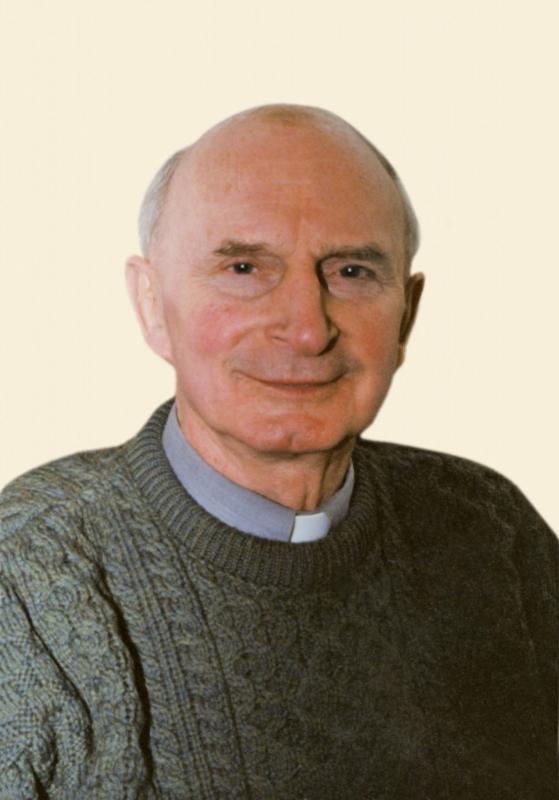
Fr Patrick J. Crowley
(1926-2015)
Fr Patrick (Pat) J. Crowley died suddenly on 25 October, 2015, in St Columban's Nursing Home, Dalgan Park, Navan, Ireland. Born in Caheragh Parish (Diocese of Cork and Ross), County Cork, on 18 March 1926, he was educated in Dromore National School, Bantry, and St Colman’s College, Fermoy, County Cork. He joined the Columbans in Dalgan Park in 1945, was ordained priest on 21 December 1951, and was assigned to Japan.
River Blackwater, Fermoy [Wikipedia]
He soon became Bursar for the Region of Japan and after a term of seven years, he took on the same task in Whitby, England. There followed appointments as Bursar in Australia (Essendon and Perth) in 1963, and later in Wellington, New Zealand, before he was reassigned to Britain where he became District Superior in 1972. As he put it himself: 'it was a case of out of the frying pan into another frying pan'. Finishing that term in 1979 he became Manager of the Mission Office in Ireland, where he computerised the office systems, before being appointed as Director of the Irish Region in 1983 for a term of four years.
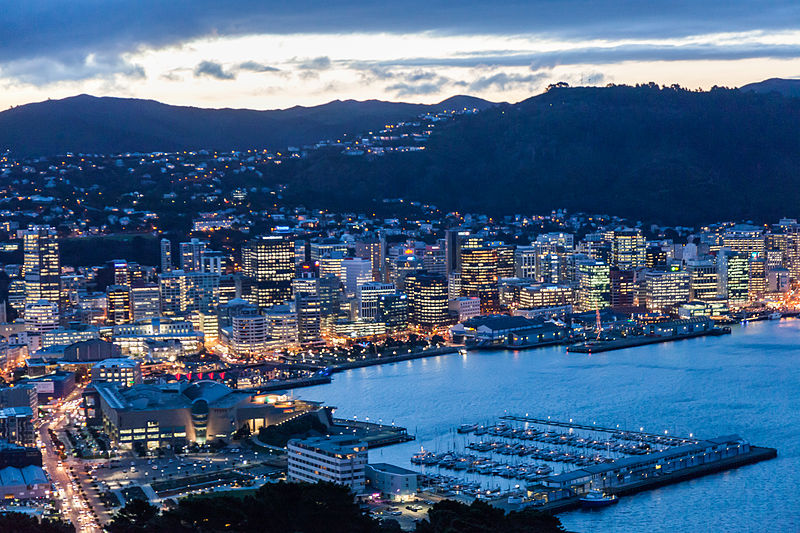
Wellington, New Zealand [Wikipedia]
He was appointed General Secretary to the Central Administration of the Society in 1987, and continued working with the General Council for over twenty years, accepting the jobs of Society Archivist and History Coordinator as well. It was only occasionally that his dedicated and painstaking work could be seen and admired. In his annual publication of the Society Personnel Directory he tried to keep up with all the personnel changes across the world. But it was his bi-annual updating of Those who Journeyed with Us, where he managed to assemble profiles and photos of the more than seven hundred deceased Columbans, that really reflected his many years of determined effort.
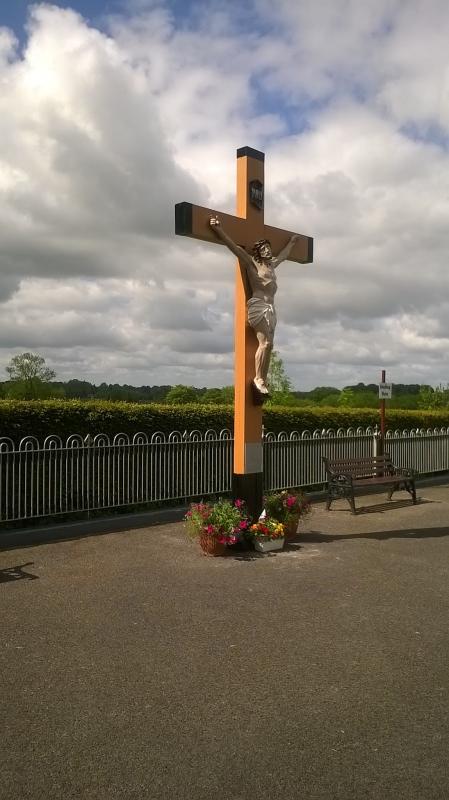
St Columban's Cemetery, Dalgan Park
This is Fr Pat Crowley's final resting place as it is of so many others whom he lovingly honoured in Those Who Journeyed With Us, the book of obituaries of deceased Columbans, many editions of which he compiled and edited.
After the General Council left Dublin for Hong Kong in 1988, Father Pat remained on to manage the house in Donaghmede, Dublin, until ill health obliged him to enter the Nursing Home in Dalgan in June 2012. Father Pat left us with memories of a caring missionary, a quiet-spoken, discrete man with a deadpan sense of humour who served others without thought of reward or recognition.
May he rest in peace.
Bantry Bay sung by John McCormack
'Some are gone upon their last logged homing,
Some are left, but they are old and gray,
And we're waiting for the tide in the gloaming,
To sail upon the Great Highway,
To the land of rest unending,
All peacefully from Bantry Bay.'
This song about the people and the place where Father Pat grew up was written by
James Molloy. The photo used in the video is by Pam Brophy and taken from
Wikipedia. Thanks to Frs Noel Daly and Cyril Lovett for the text of the
obituary.

Fr Oliver Canice Kennedy RIP
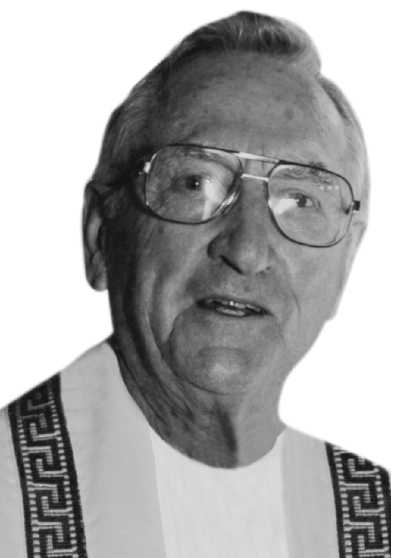
Fr Oliver Canice Kennedy
(1922 - 2015)
Fr Oliver Kennedy was born in Loughrea, Co. Galway on 3rd November 1922. He was educated at St Brendans NS, Loughrea, and St Josephʼs College, Ballinasloe, Co. Galway. In 1941, he was a member of the first class to be admitted to the new Dalgan at St Columbanʼs, Navan, Co. Meath. He was ordained priest on 21st December 1947.
His first appointment, in 1948, was to Burma, but because of the difficulties in obtaining a visa he was subsequently appointed to Korea. He was to spend the next twenty years there, working in the Kwangju area as pastor of Koksung and later of Posong, before becoming director of Catholic Relief Services in Kwangju.
In 1989 he was appointed to the General Mission Office in Omaha, Nebraska, US. He spent almost twenty years there in various roles. Affable and hard-working, he enjoyed good relationships with all the office staff.
Then, in 1986 he was appointed as a member of the pioneer Columban team to Jamaica. Jamaica was characterised by high levels of violence, and by a lack of family life values, due in large part to the suffering in slavery of so many of the early inhabitants. After seven years working there, Oliverʼs health demanded that he be reassigned to the US. There he worked once again, for as long as he was able, in the Omaha Mission Office.
He was admitted to the Dalgan Nursing Home in June 2013. His last two years were difficult, but he was treated with immense kindness and patience by all the members of the Nursing Home staff. May he rest in peace.

Columban Fr Joseph Shiels RIP
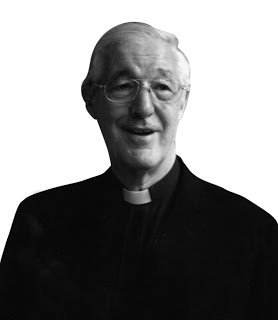
Fr Joseph Matthew Shiels
(1930 – 2015)
Fr Joseph M. Shiels died in the Nursing Home at St Columban’s, Dalgan Park, Navan, Ireland, on Sunday 4 October 2015.
Born in Paisley, Scotland, on 3 March 1930, he was educated at St Charles Parochial School, Paisley, Waterside Boys PES, Derry, and St Columb’s College, Derry. He came to St Columban’s, Dalgan Park, in 1947 and was ordained priest on 21 December 1953.
St Mirin Catholic Cathedral, Paisley [Wikipedia]
He was appointed to the southern island of Mindanao in the Philippines. After language studies, he served in Ozamis, Clarin (both in Misamis Occidental), Lanipao (Lanao del Norte) and later in Tangub (Misamis Occidental). After his first vacation he served from 1962 to 1970 in Lopez-Jaena (Misamis Occidental) where he helped the poor local farmers to increase their income considerably by planting the Lakatan variety of bananas in the spaces between their coconut trees.
From 1972 to 1976 he served in the parishes of Aloran, and Jimenez (both in Misamis Occidental).
St John the Baptist Church, Jimenez [Wikipedia]
In 1977 he undertook studies in Pastoral Counselling in Chicago. On his return to the Philippines in the 1980s, he served in Pagadian City, and then in Marawi City, followed by Lianga (Surigao del Sur), Linamon, Suarez and Buru-un (all in Lanao del Norte), in the Diocese of Iligan, until 2003. On returning to Ireland he lived in Derry and served as acting-Parish Priest in the Parish of Desertmartin.
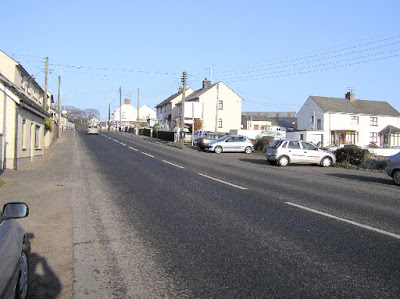
Desertmartin, County Derry [Wikipedia]
While in Derry, Father Joe researched and published his book Christian Transition, (Gracewing, Herefordshire 2007). He was always an independent thinker who liked to interpret events, and enjoyed a good discussion. He found pastoral work fulfilling and was happy to help out in Derry as long as his health permitted.

May he rest in peace.
">

Columban Fr Desmond Quinn RIP
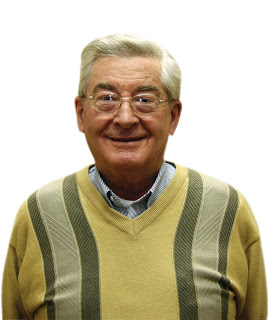
Fr Desmond Quinn
(1931 – 2015)
Fr Desmond Quinn was born at Quignashee, Ballina, County Mayo on 14 December 1931. He was educated at Behymór National School, and St Muredach’s College, Ballina. He came to St Columban’s, Dalgan Park, Navan in September 1948 and was ordained priest on 21 December 1954.
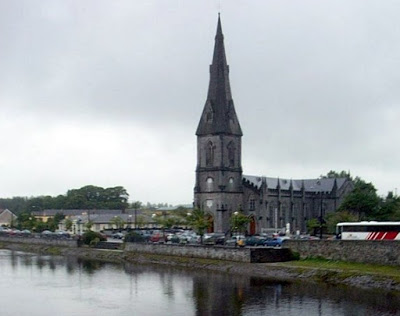
St Muredach’s Cathedral, Ballina [Wikipedia]
After two years of post-graduate study at Southwestern Louisiana Industrial Institute, now the University of Louisiana at Lafayette, Louisiana, USA, he was appointed to the Philippines and to the island of Negros. From 1957 to 1962 he served in Cauayan, La Castellana and Binalbagan.

Cauayan Municipal Hall [Wikipedia]
After his first home vacation he was assigned to promotion work in Britain where he would spend the following ten years. In 1969 he was appointed Rector of the new London House at Hampstead, London.
In October 1973, Father Des was reassigned to the Philippines. During the years that followed, he served in Isabela, Himamaylan and Binalbagan. all in Negros Occidental. There followed a two-year assignment to Vocations Ministry in the USA, working from Quincy MA. From 1981-1987 he was pastor of Hinoba-an, and became District Superior of Negros from 1987 to 1991, residing at Batang, Himamaylan.
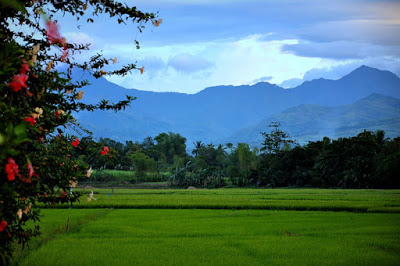
Part of Isabela [Wikipedia]
In September 1991 he was assigned to Manila on Mission Awareness and Promotion. From 1993 to 1999 he served two terms as Vice-Director of the Philippine Region. After a year as assistant in Malate Parish, he was appointed Regional Bursar of the Region of Ireland where he served until 2008.
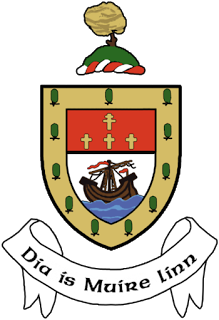
Coat of arms of County Mayo. [Wikipedia]
The motto is the Irish for ‘God and Mary with us’.
Father Des will be remembered as a man of integrity and efficiency. Cheerful, good-humoured, unfailingly friendly, courteous and obliging, he was a familiar figure on his daily walks in the Dalgan grounds. He had suffered a couple of minor strokes in recent years, yet the suddenness of his final illness took us by surprise. He died in Our Lady’s Hospital, Navan, on 20 September 2015. We mourn the death of this great-hearted and loyal Columban colleague.
May he rest in peace.
Fr Des Quinn in Manila with his classmate Fr Michael Sinnott on 12 November 2009
after the latter was released by those who had kidnapped him in Mindanao.
Father Des is survived by four siblings, Sr Josephine FMM, Father Peter, Pat and Jerry. Father Peter was ordained as a Columban priest in December 1950. He too was assigned to Negros Occidental and left Ireland for the Philippines after helping Mayo win the All-Ireland Football Final on 23 September 1951, the last time that the county has won the championship. He later became a priest in the Diocese of Orlando, Florida, and is now retired.
Fr Peter Quinn

Columban Fr Patrick Meehan RIP
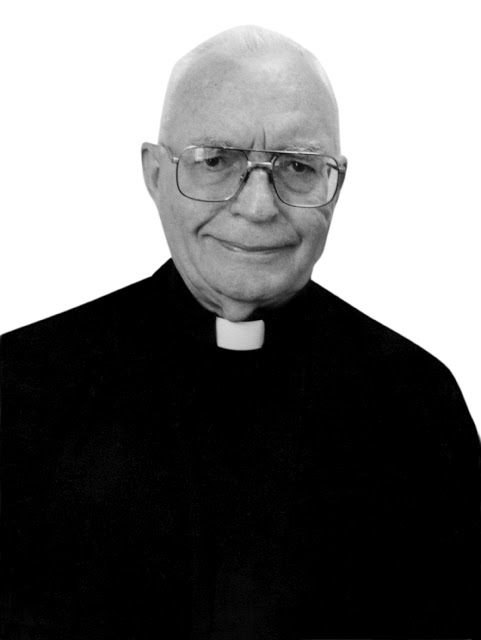
Fr Patrick Meehan
(1925 – 2015)
Fr Patrick (Paddy) Meehan was born on 24 August 1925 in Innishammon, Smithboro, County Monaghan, Ireland. His father died when he was only four years of age, a baby sister died in 1931 and his mother died when he was seven. Now the youngest of three surviving children, Paddy was reared by an uncle and aunt who moved into their home and small farm.
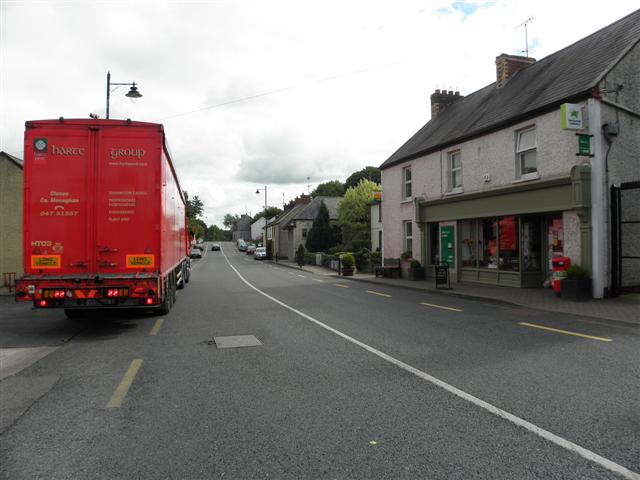
Smithboro, County Monaghan [Wikipedia]
A scholarship got him a place in St Macartan’s College and in 1943 he was one of the seven in a class of thirteen who choose to study for the priesthood.
He entered St Columban’s College, Dalgan Park, Ireland, in 1943 and was ordained priest on 21 December 1949. He was appointed to post-graduate studies in theology at Dunboyne House, a house of higher studies at St Patrick’s, Maynooth, the national seminary, in 1950-’51 and then to the seminary staff at St Columban’s, Nebraska, and later to Milton, MA, USA until 1964.
He was appointed to the Philippines in 1964. After language studies in Ozamis, he served as Pastor in Clarin, then assistant in Pagadian, and later Pastor of Dumingag. In 1972 he served in Lanipao and Maranding in the Diocese of Iligan and then as Chancellor of the Diocese of Pagadian from 1974 to 1981 and spent a three-year period in San Miguel.
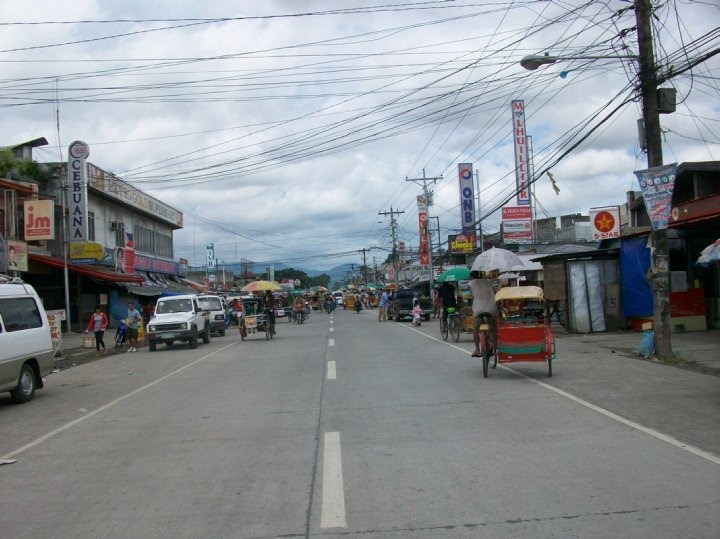
Lala, Lanao del Norte [Wikipedia]
[Lanipao is in the Municipality of Lala]
This was followed by an appoinment to promotion work in the US Region, from the Columban house in Bayside, Queens, NYC, from 1981 to 1986. Returning to the Philippines he served briefly in Marihatag, Diocese of Tandag, and then in Linamon, Corpus Christi Parish and St Michael’s Parish, Iligan City, all in the Diocese of Iligan.
St Michael’s Cathedral, Iligan City [Wikipedia]
From 1992 to 1998 he was once again on promotion work in the USA, from the Omaha and New York houses.
In 1998, he ‘retired’ to Ireland but was very happy to serve in pastoral work, in his home Diocese of Clogher as long as his health permitted. He was admitted to the Dalgan Nursing Home in April 2008.
Father Paddy was a kind, pleasant, humble man, who never flaunted his considerable learning, but was a steady, good-humoured presence in many difficult areas of Mindanao. He once concluded a note on his life quoting the psalm: ‘The mercies of the Lord I will sing for ever.’ And added: ‘Given the chance, I probably wouldn’t do it differently, only better.’
Father Paddy died peacefully in the Nursing Home in St Columban’s, Dalgan Park, on Thursday, 18 June, 2015. May God reward his caring and generous spirit.
+ + +
Father Paddy lost his father when he was only four and his mother three years later. One of Monaghan’s most famous sons was the poet and novelist Patrick Kavanagh (1904 – 1967) who wrote the poem below.
I do not think of you lying in the wet clay
Of a Monaghan graveyard; I see
You walking down a lane among the poplars
On your way to the station, or happily
Going to second Mass on a summer Sunday –
You meet me and you say:
'Don't forget to see about the cattle – '
Among your earthiest words the angels stray.
And I think of you walking along a headland
Of green oats in June,
So full of repose, so rich with life –
And I see us meeting at the end of a town
On a fair day by accident, after
The bargains are all made and we can walk
Together through the shops and stalls and markets
Free in the oriental streets of thought.
O you are not lying in the wet clay,
For it is a harvest evening now and we
Are piling up the ricks against the moonlight
And you smile up at us – eternally.
May Father Paddy, his father and mother, his deceased Columban confreres and
all his loved ones 'smile up at us – eternally.'

Obituary of John F. (Jack) Roche
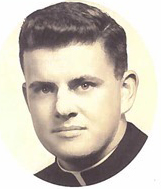
Fr John F. Roche
(1932 – 2015)
Fr John F. (Jack) Roche was born on 4 June 1932 Roslindale, Massachusetts, USA, the son of Patrick J. Roche and Helen Collins who died in April of 1938. In June 1940 his father married Ellen Nagle Sullivan whom Father Jack later described as ‘a wonderful mother that we so needed and was that wonderful mother until her death a few months after our father, on 5 January 1981.’
Father Jack attended St Francis Xavier Elementary School and Boston College High School. He entered St Columban's College, Milton, MA, in September 1949. His Spiritual Year (1950-51) was also spent in Milton, MA while the new spiritual year building was being put up in Bristol, RI. He started Philosophy at St Columbans, Omaha, Nebraska, in September 1951. He went to St Columban’s, Dalgan Park, Ireland, as an exchange student in 1953. On his return to the United States in September 1956 he went to the Major Seminary, in Milton, MA, where he was ordained on 21 December 1956.
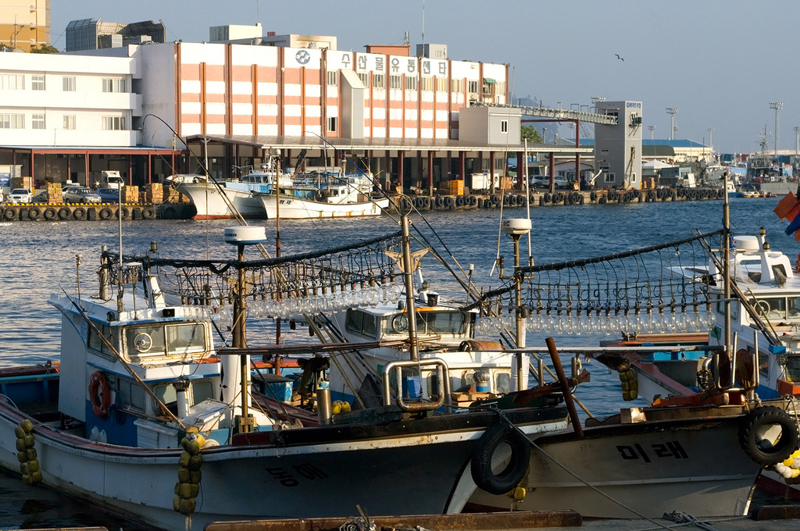
Seogwipo Harbor [Wikipedia]
He was appointed to Korea and arrived there in November 1957. After language study in Seoul, he went to Hampyong, Chollanam-do, as assistant in May 1958. In August 1958 he was appointed as assistant in Seogwipo, Jeju-do. In November 1961 he was appointed there as pastor. After vacation in the United States, he was appointed pastor in Sinchang (Sts Peter and Paul), Jeju-do.
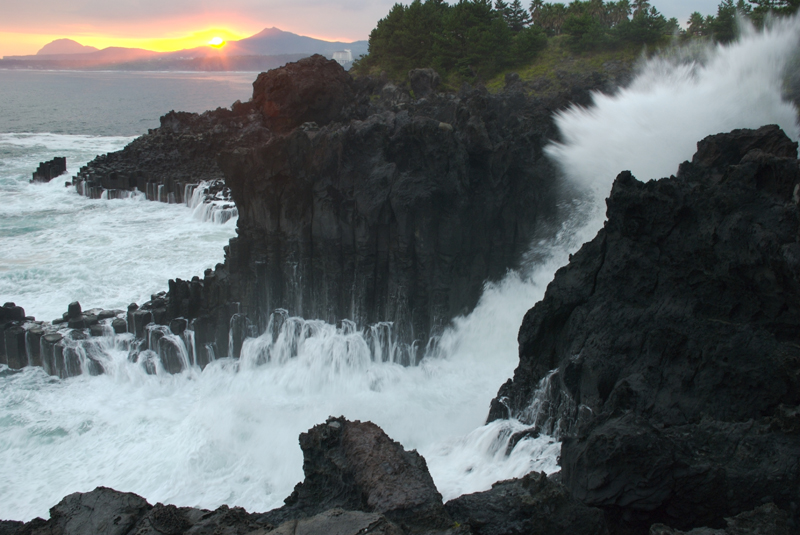
Jeju Seashore [Wikipedia]
In May 1967 he returned to the United States in ill health. In September of 1967 he was encouraged to take up a parish assignment at St Mary’s Parish in Wrentham, MA. Fr Frank Smith the pastor of St Mary’s was very welcoming and a good support for Father Jack. The people in Wrentham appreciated Father Jack’s warmth and empathy which he expressed in his ministry, particularly in his homilies. In 1970 he went with Fr Smith who had been transferred to St Patrick’s parish in Stoneham, MA and was there till 1975. It was a happy time as was Father Jack’s time from 1975-1978 at St Thomas More Parish in Braintree, MA, and from 1978-1982 at Our Lady of Good Counsel in Quincy, MA. From 1982-1983 he was at St Anthony’s Parish in Cohasset, MA. From September to December 1983 he covered the Columban parish on Saint John in the US Virgin Islands after which he went to St Brendan’s Parish in Dorchester, MA, until 1990. Since then he helped out at St Joseph’s Parish in Quincy, MA.
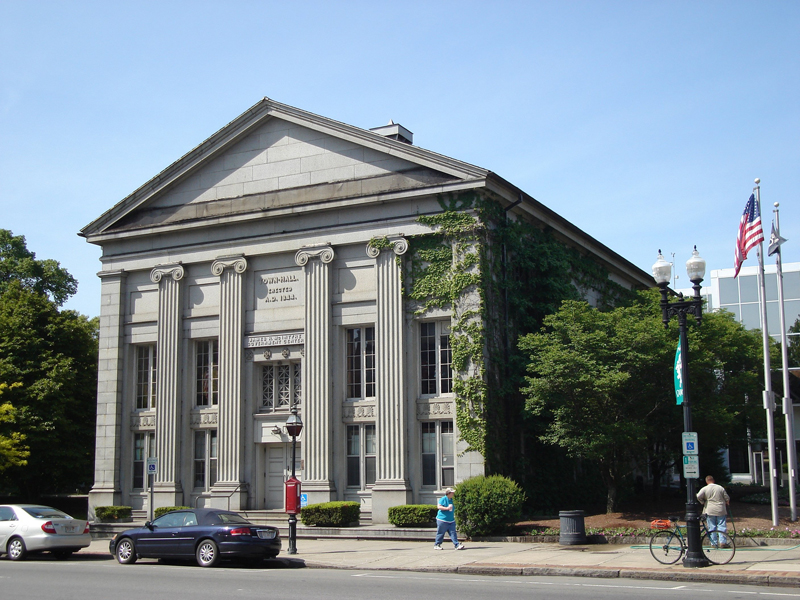
Quincy City Hall [Wikipedia]
From 1988 through 1996 he was quite involved in giving AA (Alcoholics Anonymous) retreats - including two in Omaha - and also parish missions in the Boston area. At one point, during 1992-1993, he was saying a Mass each weekend at Our Lady of Lourdes Church in Carver, MA, as well as St Joseph’s. The end of 1997 found him winding down, retiring to his home in Humarock, MA.
In October 2009 he retired to the Columban retirement home in Bristol, RI. Fr Jack Roche died on the evening of 7 May after having suffered a gradual decline in his health during this past year.
Father Jack has written:
‘The heartening thing through all of this life - the ministry part, has been the connectedness with people and a real sense of privilege being a part of the lives of those I had the honor of serving with a as a priest. All through my life, the tremendous support of my brothers, Jim who died in 1968 and Bud and Pat and my Columban brothers since 1949.
‘The heartbreak has been there . . . but now see all of that aching as a blessing - in the end - now that is - I feel at peace - deeply grateful for Vatican II and its continuing impact.
‘What has kept me going is a love of life and family both biological and Columban and a continuing and ever deepening relationship with a loving God facilitated by the climbing of the twelve steps of spirituality as advocated and practiced by Alcoholics Anonymous.’
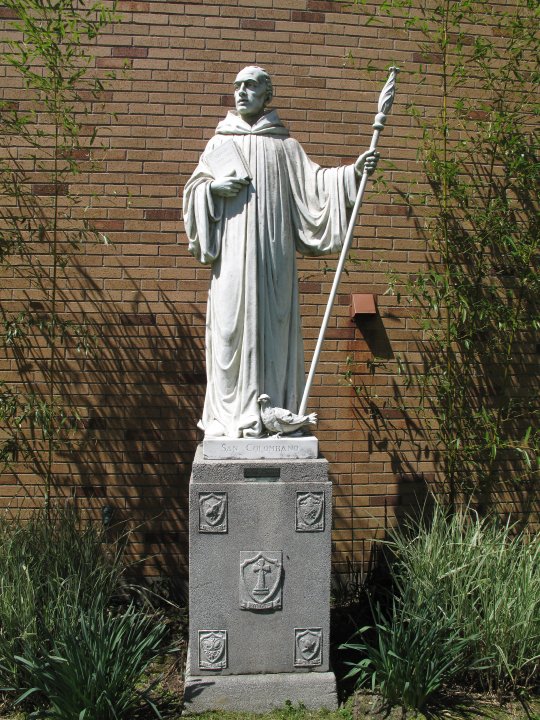
St Columban, Bristol, Rhode Island

Columban Fr Denis Bartley RIP
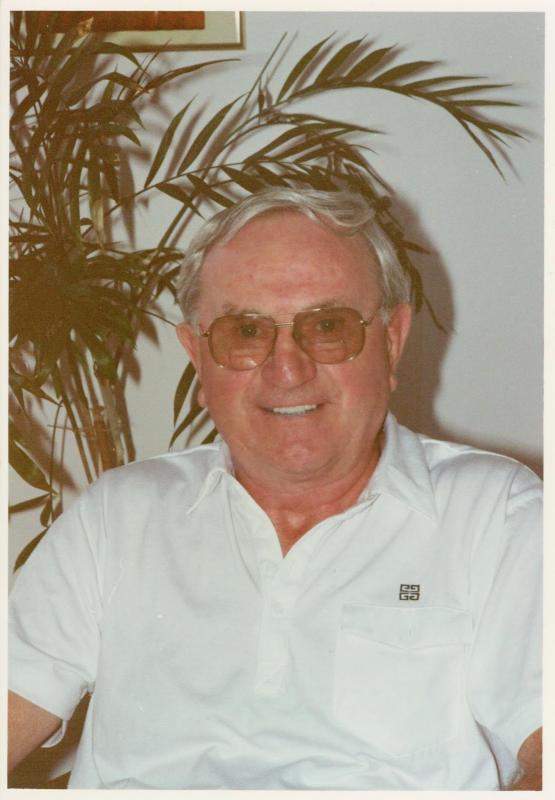
Fr Denis Bartley
18 September 1927 – 20 April 2015
Fr Denis Bartley died in Our Lady’s Hospital, Navan, on 20 April. Born at Killinure, Brittas, Pallasgreen, County Limerick on 18 September 1927. He was educated at Eyon National School, and Mount Melleray, where he also studied two years of Philosophy. He came to St Columban’s College, Dalgan Park, Navan, in 1947 and was ordained priest on 21 December 1951.
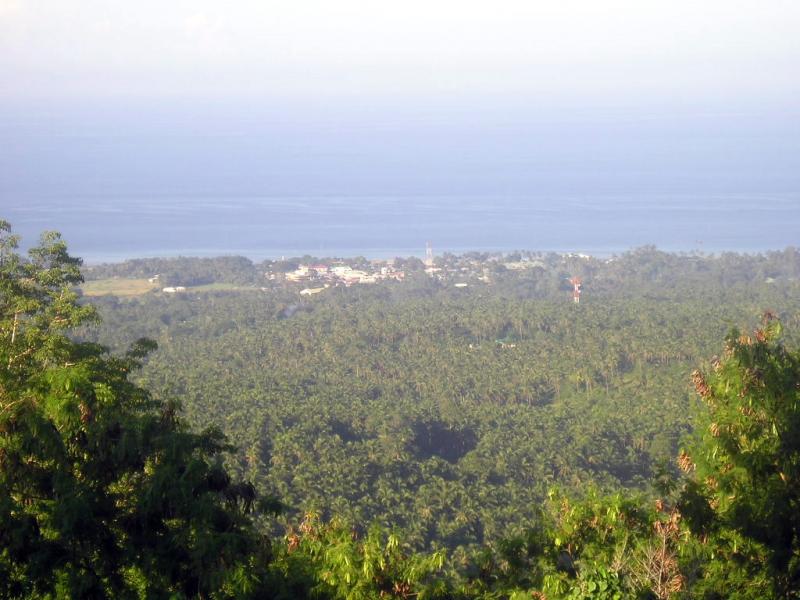
Mambajao, viewed from Mount Hibok-Hibok [Wikipedia]
Appointed to the Philippines and the District of Mindanao, he served initially in Mambajao (Camiguin), and later in the parishes of Dumalinao, Dumingag (both in Zamboanga del Sur), Ozamis City, Malabang (Lanao del Sur) and Sapang Dalaga (Misamis Occidental). A number of these appointments were particularly difficult, and he served there in traumatic times.
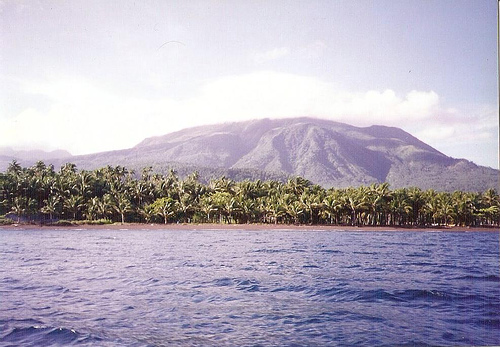
Mount Hibok-Hibok [Wikipedia]
He was in Mambajao after Mount Hibok-Hibok’s volcanic eruption killed 1,000 people and destroyed the parish house on 4 December 1951. [Editor’s note: the Columbans had just taken over the four parishes in Camiguin from the Jesuits.] He was pastor of Malabang when Fr Martin Dempsey was shot dead on 19 October 1970.
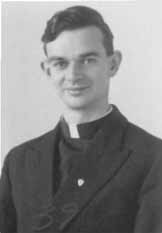
Fr Martin Dempsey
1934 – 19 October 1970
In March 1974, Fr Bartley was appointed to the USA and served as director of promotion.

Cathedral Basilica of St John the Apostle and Evangelist, Lima [Wikipedia]
In 1980, he was assigned to Peru and served in Lima during the following three years. Re-assigned to the USA in 1983, he did mission education work, and served in the Bayside and Kew Garden houses in New York City before returning as bursar to the Columban house in Omaha, Nebraska, where the American headquarters are located. He served in various other roles in Omaha until poor health forced his return to Ireland and to St Columban’s Nursing Home in January 2012.
Father Denis was a private, rather reserved person, yet he was good company and an excellent host. Totally dedicated and committed to the people, he was remembered with great affection in many parishes long after he had been transferred elsewhere.
May he rest in peace.
Fr Patrick Raleigh, Regional Director of the Columbans in Ireland, described Father Denis’s funeral as ‘a very joyful celebration’ – not unusual at Columban funerals – and noted that at the lunch after the burial in St Columban’s Cemetery a couple of Limerick songs were sung, led by Bob Richardson, a nephew of Father Denis, and Paddy Crowe, a brother of Columban Sister Sheila Crowe. One was There is an Isle, associated especially with rugby in Limerick.
The other song was Limerick, You’re a Lady. Your editor happened to find a
recording of this sung by Milaflor Abordo from the Philippines.

Obituary of Columban Fr Colm McKeating
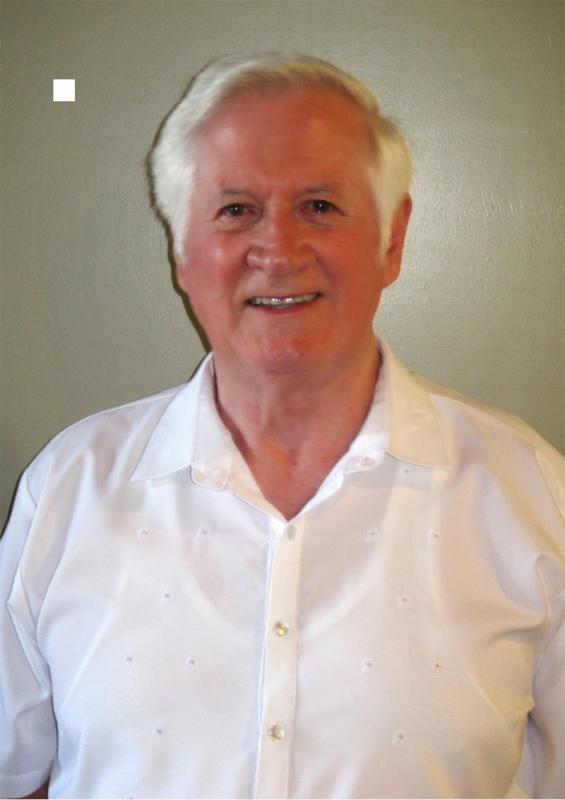
Fr Colmcille McKeating
(9 July 1940 – 21 March 2015)
Fr Colmcille (‘Colm’) McKeating died in the Columban Nursing Home, Dalgan Park, Navan, Ireland, on 21 March 2015. Born in Belfast on 9 July 1940, he was educated at St Patrick’s Christian Brothers’ School, Donegall St, Belfast, and St Mary’s Christian Brothers’ School, Barrack St, Belfast. He came to St Columban’s, Navan, in September 1956 and was ordained priest on 21 December 1962. He was appointed to post-graduate studies in Science at Cambridge University and later at Queen’s University, Belfast.
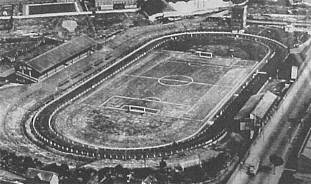
Celtic Park, Belfast, where the young Colm often went in the 1940s with his father on Saturday afternoons to watch Belfast Celtic play. The club pulled out of the Irish League (soccer) in 1949 because of sectarian troubles.
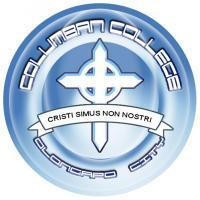
Columban College school seal [Wikipedia]
Appointed to the Philippines in 1967, his first eight years were spent in the parishes of Iba and Botolan, Zambales, and he later combined pastoral work with full-time teaching mathematics and chemistry at Columban College, Olongapo City, Zambales. During his second term, from 1973 to 1978, he opened the new Parish of the Blessed Trinity in New Cabalan, Olongapo City, while he continued to teach part-time at Columban College.
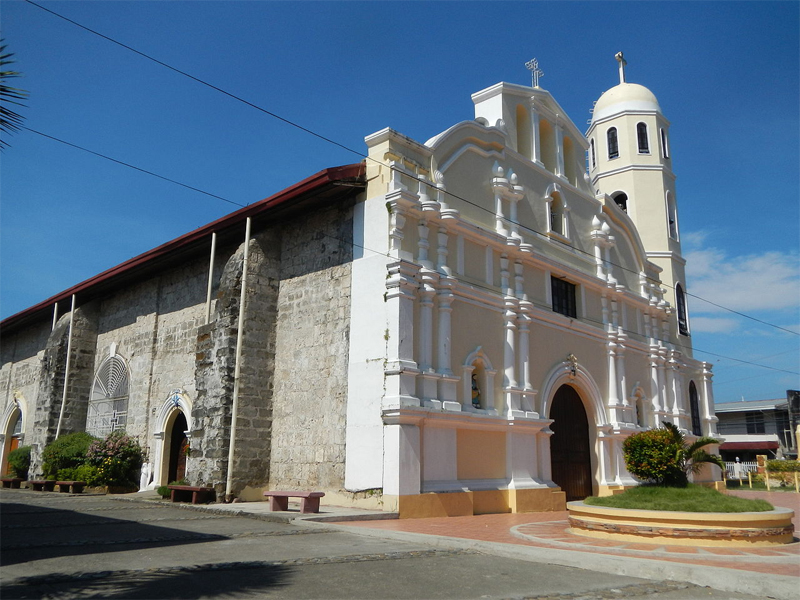
Cathedral of St Augustine, Iba, Zambales [Wikipedia]
From 1978 to 1984, he was assigned to the Region of Ireland where he served initially as the Justice and Peace Officer, then for three years on the Vocations Team, and later on the staff of the Columban Formation Programme at Maynooth. From 1984 to 1986 he studied Fundamental Theology at Rome’s Gregorian University.
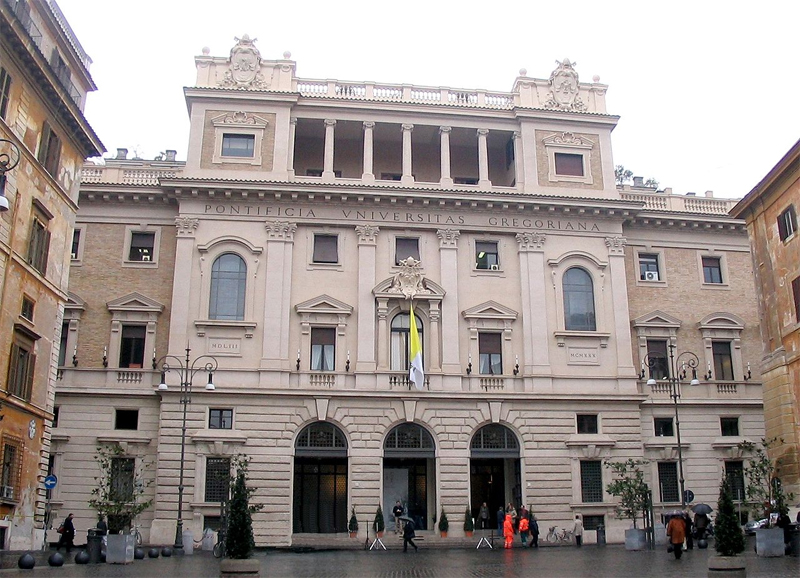
The Pontifical Gregorian University, Rome [Wikipedia]
He returned to the Philippines in 1987 where he directed the Spiritual Year for the first group of Filipino students. In the years that followed he combined involvement in the Initial Formation Programme with the continuation of his doctoral studies in Rome. The fruits of this research later appeared in his first book, Eschatology in the Anglican Sermons of John Henry Newman (1992). In 1998 he was appointed superior of the Luzon District, and Director of the Region of the Philippines from 1999 to 2005. This was followed by a period of teaching at Maryhill School of Theology, New Manila, Quezon City.

Painting of Blessed John Henry Newman, by Jane Fortescue Seymour, circa 1876
[Wikipedia]
Father Colm was a man of many talents, a pastor, a teacher, a theologian, and an able administrator. A man of keen mind, he was also kind, compassionate, good-humoured and committed to the struggle of justice for the oppressed. Illness forced his return to Ireland in July 2013 and he showed great courage and patience as his strength gradually diminished. He worked on his last book Light Which Dims the Stars – A Theology of Creation until it was ready for publication.
May he rest in peace.
Firmly I believe and truly
Word by Blessed John Henry Newman
Firmly I believe and truly
God is Three, and God is One;
And I next acknowledge duly
Manhood taken by the Son.
And I trust and hope most fully
In that Manhood crucified;
And each thought and deed unruly
Do to death, as He has died.
Simply to His grace and wholly
Light and life and strength belong,
And I love supremely, solely,
Him the holy, Him the strong.
[And I hold in veneration,
For the love of Him alone,
Holy Church as His creation,
And her teachings are His own.
And I take with joy whatever
Now besets me, pain or fear,
And with a strong will I sever
All the ties which bind me here.]
Adoration aye be given,
With and through the angelic host,
To the God of earth and Heaven,
Father, Son and Holy Ghost.
Firmly I believe and truly
God is Three, and God is One;
And I next acknowledge duly
Manhood taken by the Son.
And I trust and hope most fully
In that Manhood crucified;
And each thought and deed unruly
Do to death, as He has died.
Simply to His grace and wholly
Light and life and strength belong,
And I love supremely, solely,
Him the holy, Him the strong.
[And I hold in veneration,
For the love of Him alone,
Holy Church as His creation,
And her teachings are His own.
And I take with joy whatever
Now besets me, pain or fear,
And with a strong will I sever
All the ties which bind me here.]
Adoration aye be given,
With and through the angelic host,
To the God of earth and Heaven,
Father, Son and Holy Ghost.
Fr Colm with four newly-arrived Korean Columban Lay Missionaries in the Philippines, 2011
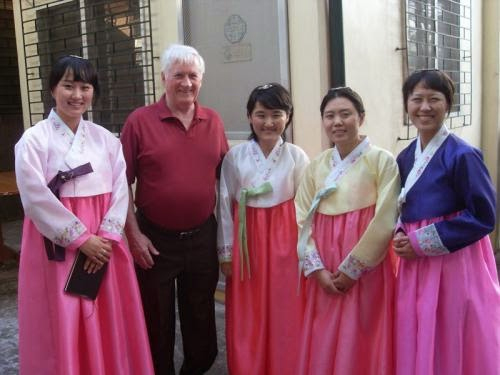
L to R Noh Hyein, Kim Sunhee, Park Juri and Shin Hyun Jeong
Father Colm once told your editor that he was the youngest ever Columban to be ordained, with a special dispensation because he was only 22 years and five months. The usual minimum age is 24. And he also told your editor that when appointed Regional Director in 1999 at the age of 59 he was the oldest to begin in that position.
Among Father Colm’s many gifts was a pleasant tenor voice. His ‘party piece’, which your editor often heard him sing, was the song below. Ruby Murray was also from Belfast.

Columban Fr Frederick Hanson RIP: Obituary and funeral homily
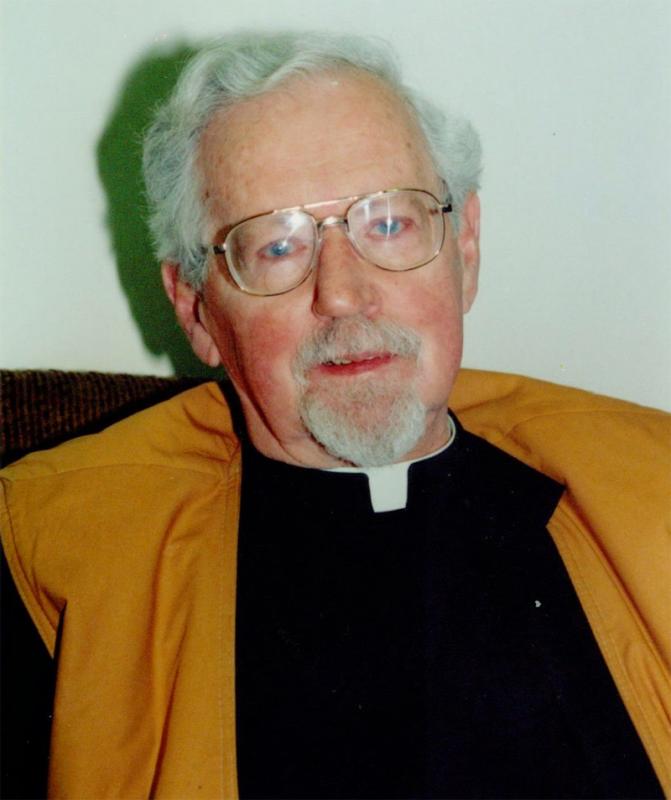
Fr Frederick Hanson
8 September 1916 – 15 February 2015
Fr Frederick (‘Fred’) Hanson was born on 8 September 1916 in Belfast. Educated at St Brigid’s National School, Holy Family National School and St Mary’s Christian Brothers’ School, Belfast, he came to the Old Dalgan, the original St Columban’s seminary, in Shrule, County Galway, in 1933. He was a member of the last class to be ordained in Shrule in December 1939, before the seminary relocated to St Columban’s, Navan.
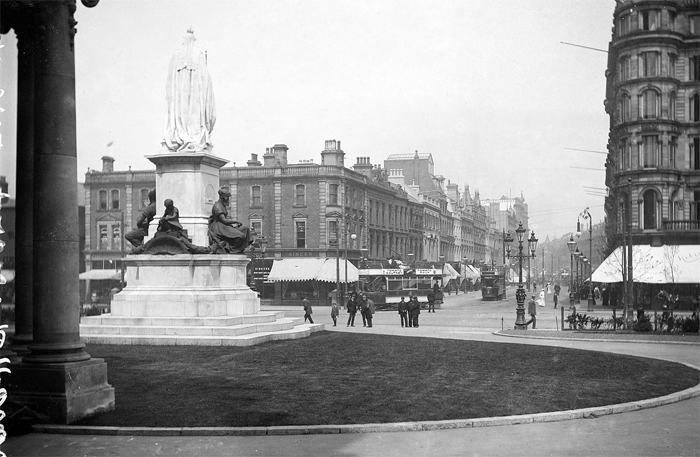
Donegall Square, Belfast, in the early 1900s [Wikipedia]
The Second World War prevented his being assigned overseas, so he was assigned to parish work in the Diocese of Down and Connor for three years. He joined the Royal Air Force as a chaplain in 1943 and served until 1950. This appointment clearly suited Fred’s talents. The RAF Chaplain-in-Chief pleaded that he be allowed serve a further three years, ‘Fr Hanson is a most zealous priest and has done heroic work in looking after young Irishmen in several RAF stations . . . I cannot conceive of anybody doing greater work for the glory of God than he is doing in his present position.’
The Spitfire, above, is a symbol of the RAF’s victory in the Battle of Britain in 1940. The song and the singer, Dame Vera Lynn, born seven months after Father Fred and still happily with us, are symbols of the World War II period for older people in Britain.
He was assigned briefly to Korea, but the outbreak of war in that country resulted in a change of assignment to Japan. From 1953 until 1958 he served as Editor of Tosei News (an English news service for missionaries) and NCWC correspondent for Korea and Japan.
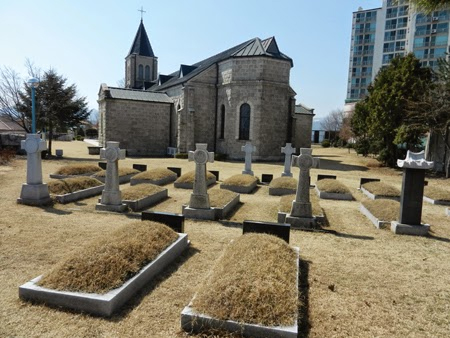
Chuncheon Cathedral and Cemetery
Columban Bishop Thomas Quinlan was the first Bishop of Chuncheon and is buried there with some other Columbans.
From 1958-1964 he was assigned once again to Korea where he served as secretary to Bishop Quinlan of Chuncheon, Korea. There followed two years doing pastoral work on a temporary basis in parishes in England. Then he was assigned to the Parish of St Teresa, Glen Road, Belfast and later to Holy Family Parish where he served until the year 2000.

St Teresa’s, Glen Road, Belfast
Father Fred was a big man, big in stature and with a voice to match. He was generous and kind, devoted to his sister Mary, and managed his long illness with patience and occasional outbursts of exasperation.
May he rest in peace.
Last December Father Fred and his classmate Fr Daniel Fitzgerald celebrated the 75th Anniversary of their ordination, the first Columbans to do so. Father Dan attended the funeral Mass of his friend of more than 80 years.
Homily for the Funeral of Fred Hanson
Columban Fr Neil Collins gave this homily at the funeral Mass on 17 February.
‘Do not let your hearts be troubled. Trust in God still, and trust in me’ (John 14:1).
First Assignment
Fred Hanson read these words many times during his wonderfully long life. I’m sure there were moments when he heard them addressed to him personally. He was ordained on 21 December 1939 and appointed to Hanyang, China, but the outbreak of WWII prevented him from going to the missions.
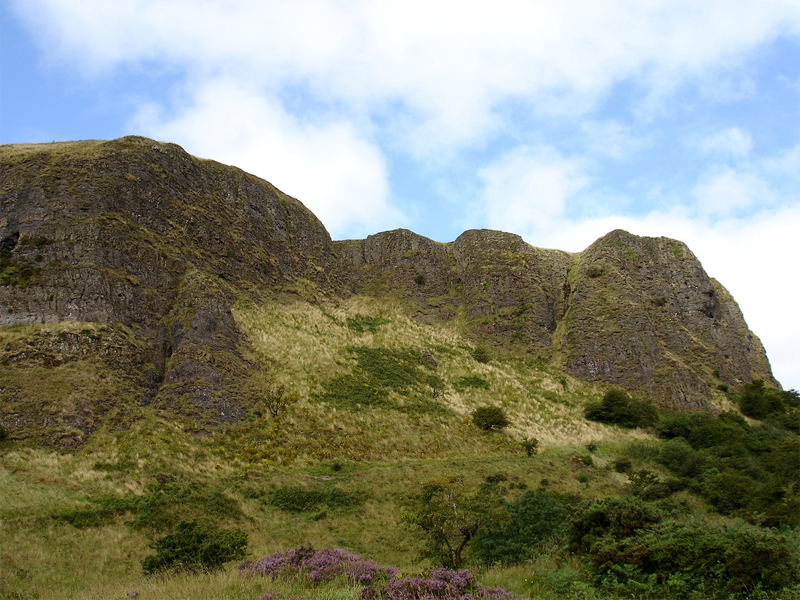
Cave Hill, overlooking Belfast [Wikipedia]
In 1942, after helping in several parishes in Down & Connor, he got permission to apply to be a chaplain in the RAF. There were postings in the Midlands and the north of England, and in 1945 he even had three months in France. After the War he asked to be demobbed, but the Principal Chaplain, Mgr H. Beauchamp, wrote to the Superior General on 11 Feb 1948:
‘Father Hanson is a most zealous priest and has done heroic work for me in looking after young Irish boys in several RAF stations in the vicinity of where he lives. Were it not for him they would be assigned to the care of English Priests who really would not understand them, neither would they understand them. I would, therefore, ask you if you would be so kind to allow Father Hanson to remain with me for another three years. I cannot conceive anybody doing greater work for the glory of God than he is doing in his present position.’
Dr Jeremiah Dennehy (Superior General), who had been a chaplain himself, sympathized with the Monsignor but refused, citing the needs of the missions, and arguing that Fred needed to go East as soon as possible while still young enough to learn a language and make the necessary adjustments. On 1 February 1949 he appointed him to the Prefecture of Kwoshu, Korea. Unfortunately the North Koreans invaded on 25 June 1950, and we have a photo of Fred on a boat for Pusan, with a caption, ‘the climax to a hectic twenty four hours evacuating from Mokpo’.
Appointment to Japan
Fred, with some other Columbans, was transferred to Japan where the superior used them to open new parishes. After language school he became ‘the first priest Hashimoto has ever seen’, conspicuous by his height and his dreadful Japanese. He wrote several informed articles for the Far East resulting in an invitation to become editor of Tosei News and NCWC correspondent. His accreditation as a war correspondent enabled him to travel freely between Japan and Korea and in 1955 the society assigned him to Seoul. A term as Bishop Quinlan’s secretary followed.
Assignment to Ireland
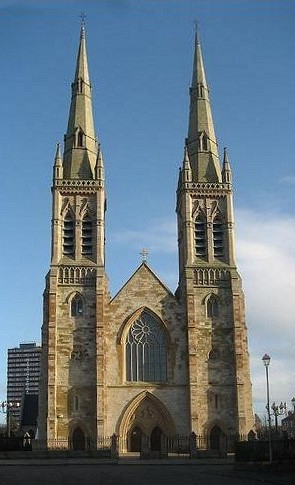
St Peter’s Catholic Cathedral, in the Falls Road area of Belfast. [Wikipedia]
In the mid-1960s, with minimal Japanese and no Korean, Fred was shocked when he was re-assigned to Ireland. From October 1966 to March 1988 he worked in St Teresa’s on the Glen Rd, Belfast, and then in Holy Family. In 1968 the RUC attacked a civil rights march in Derry and in 1969 loyalists burned the nationalist Bombay St in Belfast. Fred was on the Glen Rd. For those who don’t know Belfast the Glen Rd is the upper part of the Falls Rd. There were many funerals, many times when the priest had to read today’s gospel, searching for words that would comfort grief-stricken families. How could you say, ‘Do not let your hearts be troubled. Trust in God still, and trust in me?’
Retirement to Dalgan
By the year 2000 an 84-year-old Fred decided that his active ministry was over. He moved to Dalgan (St Columban’s Retirement Home). I remember him saying, ‘Neil, don’t grow old. There’s no pleasure in it.’ Among the crosses he had to bear was the death of his sister Eileen in December 2000. When Mary showed increasing signs of Alzheimer’s Fred brought her to Dalgan to let her see our retirement home, and then the Kilbrew Nursing Home, where he visited her until she died in 2008.
I go to prepare a place for you
In today’s gospel, (John 14:1-6) on that first Holy Thursday, Christ said simply, ‘I go to prepare a place for you’. It was a remarkably undramatic way to describe what was about to happen – the Agony, the Scourging, the Crucifixion. Fred shared in that suffering. Now he has heard the rest of Christ’s words, ‘After I have gone and prepared you a place, I shall return to take you with me, so that where I am you may be too’.

Columban Fr Daniel Baragry RIP
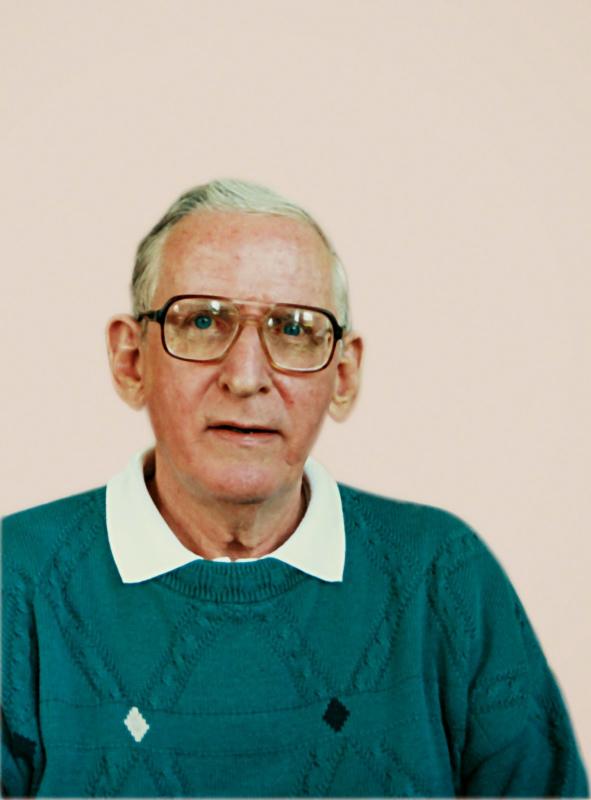
Fr Daniel M. Baragry
11 May 1930 - 9 January 2015
Fr Daniel ('Dan') Baragry was born on 11 May 1930 in Tipperary Town, County Tipperary, Ireland. Educated at Christian Brothers School, Tipperary, and The Abbey School, Tipperary, he came to St Columban's, Dalgan Park, Navan, in September 1948 and was ordained priest on 21 December 1954.
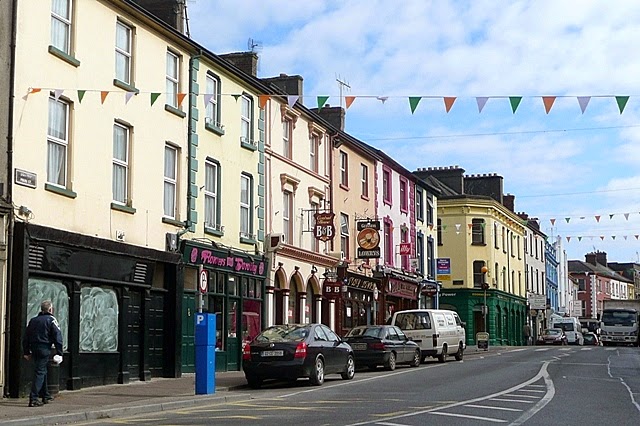
Main Street, Tipperary Town [Wikipedia]
Father Dan was assigned to the Philippines and spent the next 45 years happily working in that country. The first 35 years were all spent in parishes in the southern island of Mindanao. He served in Pagadian City (Zamboanga del Sur), Mahinog (Camiguin Island), Malabang (Lanao del Sur), Tangub City (Misamis Occidental), Bacolod (Lanao del Norte), Anakan (Gingoog City, Misamis Oriental), Alubijid (Misamis Oriental), Marihatag (Surigao del Sur) and Linamon (Lanao del Norte).
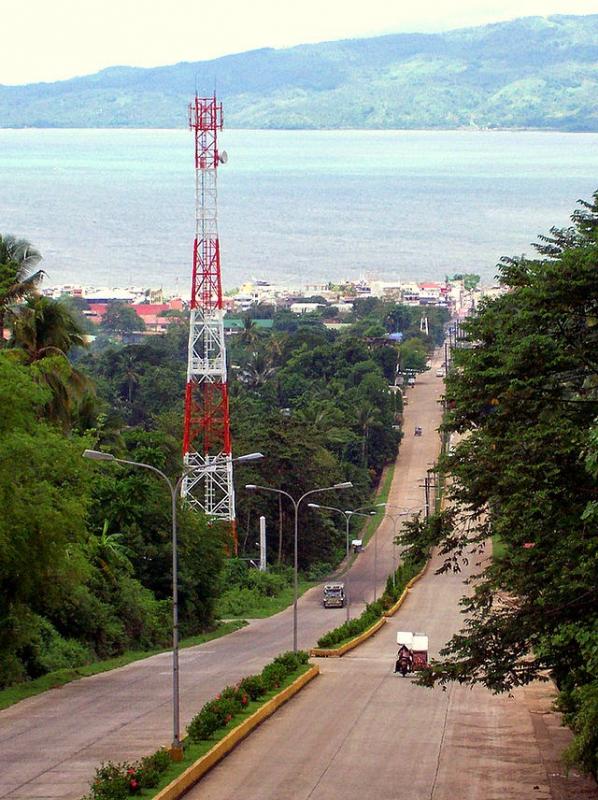
Pagadian City, on Illana Bay [Wikipedia]
A man of prodigious energy, he served for example in Anakan, a very rough, rugged, mountainous parish, which had a logging camp and a total of eighty-three small scattered communities. Dan was out almost every day on his motor-bike, visiting one or other community. On his return to the parish house, after a short rest, he had the energy to play tennis, and after a shower and supper, there was always the designated prayer time. A former superior said of him 'Dan always wanted the hard assignments; he worked hard, played hard and prayed hard'. When the new area of Tandag was taken on, Dan was one of the first to volunteer, even though his assignment was an eight-hour drive from the Columban Central House in Cagayan de Oro.
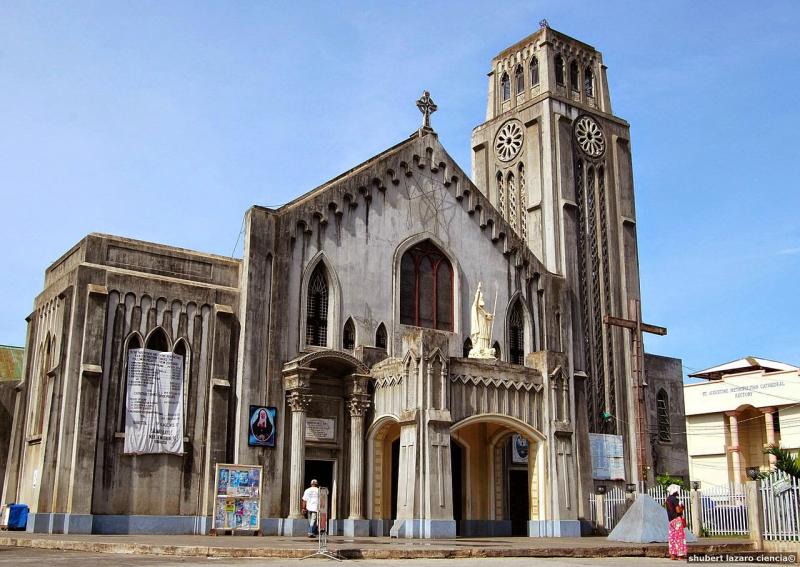
San Agustin Cathedral, Cagayan de Oro City [Wikipedia,
Shubert Ciencia]
In the early 1990s, Father Dan took some units of Clinical Pastoral Education. Later, residing in the formation house in Cebu City, he undertook a new apostolate with patients, and their families of the psychiatric wing of Vicente Sotto Memorial Medical Center, a government hospital. In this apostolate he served those most neglected by society. By the year 2000 his own health required care and he spent a year in Manila before returning home to Ireland in April 2001. As long as he was active he did some book-keeping work in the farm office before being confined to the Dalgan Nursing Home where he died on 9 January after participating in the morning Eucharist. Father Dan was a quiet, dedicated, loyal Columban with a gentle sense of humour.
May he rest in peace.
Slievenamon is the unofficial anthem of Tipperary people and is sung here by the late Frank Patterson, from Clonmel, County Tipperary.
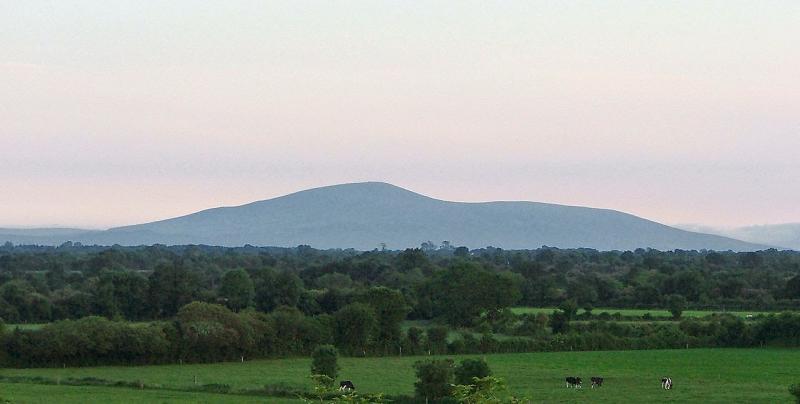
Slievenamon, County Tipperary [Photo:Wikimedia Commons user Trounce]
Bishop Nereo P. Odchimar of Tandag, which covers the province of Surigao del Sur, wrote in an email to Fr Pat Raleigh, Columban Regional Director in Ireland: Kindly convey to the Columban Fathers and to Fr Dan's family condolence and prayers from the Diocese of Tandag. Thanks for giving us a great missionary who was an inspiration for our younger priests.
Fr Raleigh noted that on the night that Dan died the nurse on duty, Ruby, and one of the carers, Susanne, were from the Philippines. How appropriate.
Elma Guia O'Connell, a Filipina who served as a Columban lay missionary in Taiwan and is now married in Ireland, emailed me, We are on the way back to Dungarvan from Navan where we attended the funeral of Fr Dan Baragry yesterday in Dalgan. I don't know much about Fr Dan but once you know one Columban who dedicated his life to the Filipino people, it feels like you know them all.
Father Dan and I spent some years together on the formation team in Cebu City. He experienced real joy in spending every morning from Monday to Friday with the patients in the psychiatric wing of the hospital where he worked. He had great patience and remarkable kindness, a kindness that his late brother, Fr Frank Baragry who died in 1997, also had. Father Frank spent 40 years in Mindanao as a Columban missionary. Their nephew, Fr Dan Baragray CSsR, the newly-elected Provincial of the Dublin Province of the Redemptorists, also worked in the Philippines, first as a student and later as a priest. Long-distance phone-calls between the two Dan Baragrys used to cause some confusion when they had to be done through an operator!
Something I will always remember about Father Dan is his very firm and welcoming handshake.
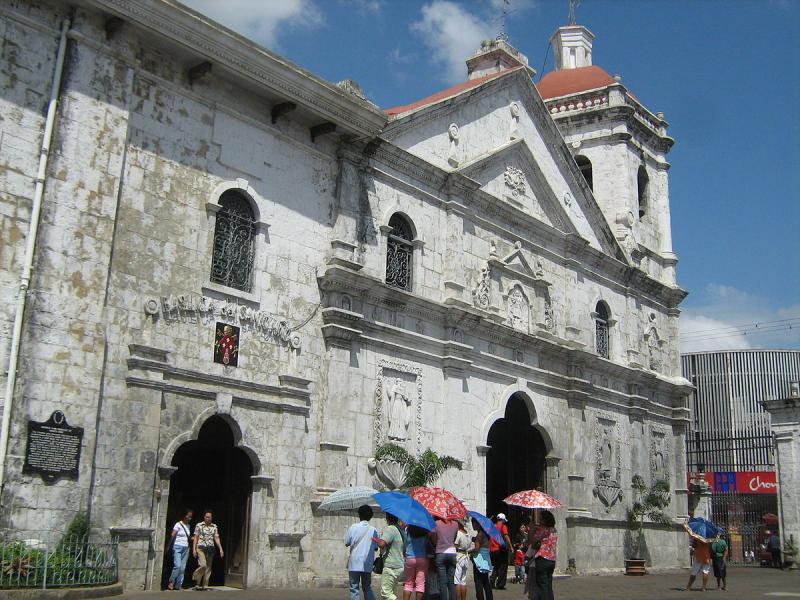
Basílica Minore del Santo Niño de Cebú [Wikipedia]

Columban Sisters
+ Sister Mary Rosarii McTigue SSC
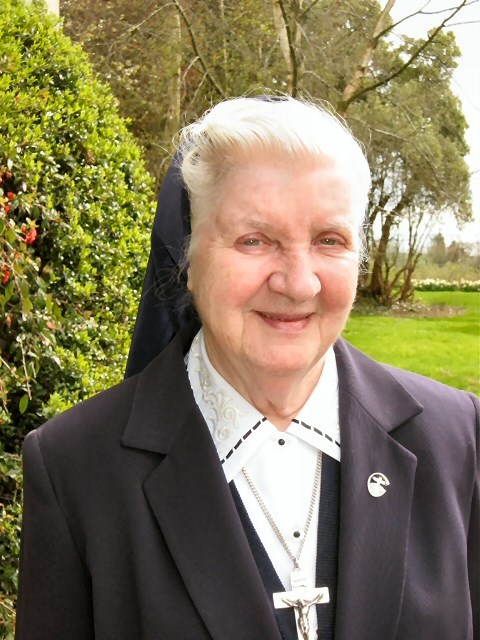
Sr Mary Rosarii McTigue SSC 23 October 2015
Columban Sr Mary Rosarii McTigue died in St Vincent’s Hospital, Dublin, Ireland on 22 October and was buried in the Sisters’ Cemetery at St Columban’s, Magheramore, County Wicklow, a beautiful place by the sea 60 kms south of Dublin. Sister Rosarii was from Foxford, County Mayo in the west of Ireland.
Words of welcome by Sr. Rose Gallagher,SSC during the funeral Mass of S. Mary Rosarri McTigue.
On behalf of the Sisters here in Magheramore it is my great privilege to welcome you all and in particular to welcome Sr. Rosarii’s sisters Kathleen and Margaret, family members, relatives and friends.
Welcome also to our priest friends the Columban Fathers, our valued Staff members, and our own Sisters who have travelled to be with us.
Our gratitude to Sr Mary McHugh who is our homilist today and who, like Sr. Rosarii, was also missioned in Korea…
Thanks too to Fr Patrick Donohoe, our Resident Chaplain, who will lead us in our Liturgy together with our priest concelebrants.
In our celebration of the Eucharist today, we celebrate Sr. Rosarii’s life and give thanks to God for this woman of singular stature, cherished in the heart of her family, in the heart of the Columban family and in the heart of the Korean people, among whom she spent nearly 50 years of her missionary life.
In this Eucharist also, we unite with our Sisters in Korea who, today, are celebrating 60 years since their arrival in Korea.
Sr. Susanna Choi wrote in an email: ‘On 24 October, the Sisters will celebrate 60 years of Missionary life in Korea, which is Sr Rosarii’s funeral day. She will be remembered in a very special way with great memories of her life spent on mission in Korea. The Sisters, and the people especially in Jeju, will be very sad for Sr Rosarii who was a great missionary religious woman. We are grateful to her for her life and her love for our people in Korea. May she rest in peace.’
Dear and beloved Rosariii, may choirs of angels sing you to your rest. Amen.
Sr Rosarii’s Own Account of her Life
You will find a fascinating account of Sr Rosarii’s life in an interview on 13 September 2013 and published on the website of the Columban Sisters. The interview is here.
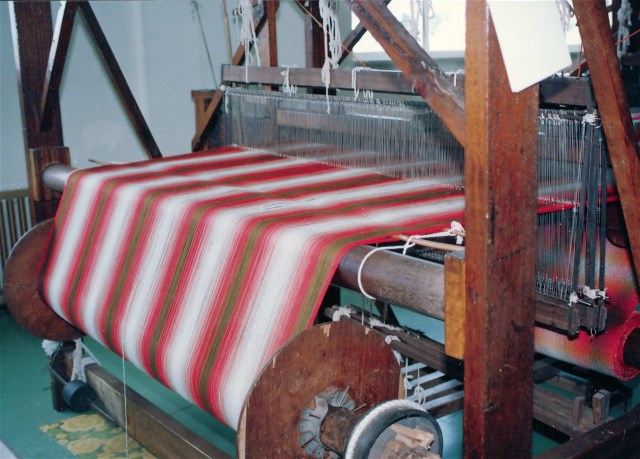 Weaving, Jeju Island, Korea
Weaving, Jeju Island, Korea

+ Sister Mary O’Dea SSC
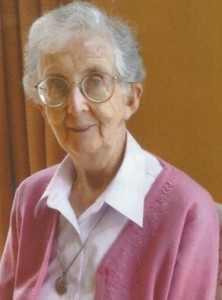
Sr Mary O’Dea SSC 11 October 2015
Sister Mary O’Dea passed away peacefully in St James’s Hospital, Dublin, Ireland, on Sunday, 11 October 2015. She was buried in the Convent Cemetery at St Columban’s, Magheramore, County Wicklow after the Funeral Mass on 14 October. The main celebrant and homilist was her brother, Fr Donal O’Dea, a Columban who served in the Philippines for 60 years. Removal of Remains on Tuesday, 13 October, at 5.30pm to the Convent Chapel, Magheramore, Wicklow. Funeral Mass on Wednesday at 11.30 a.m. followed by Interment in the Convent Cemetery
Fr Donal O’Dea’s Homily
My Sister Mary / Your Sister Mary / Madre Maria
Greetings: Relatives, friends, Columban Brothers and Sisters and all her present –
Welcome to this celebration of Mary’s life – a life like all of us with many facets – ups and downs, surprises, disappointment. Each of us who knew her can tell of our own memories of a lovely person and we do this to the background and in relation to another life – Christ’s life, death and resurrection – which is what we are celebrating in the Mass.
Sister.Mary was our blood sister. Sister Mary was your Sister as a Columban and she was ‘Madre Maria’ to the people of the small community she helped each weekend in Lima and in the many tasks, places and countries where she worked and lived.
Mary was an open person – she wore her heart on her sleeve and she loved people in a very personal way.
A teacher – she liked to tell stories and one of the earliest I remember was when as a child in Quin, she came into our mother and told her that the mother hen in the yard was calling the chicks to come home and that they were totally ‘ignoring her’ – ‘just like we ourselves do to our mother,’ she said.
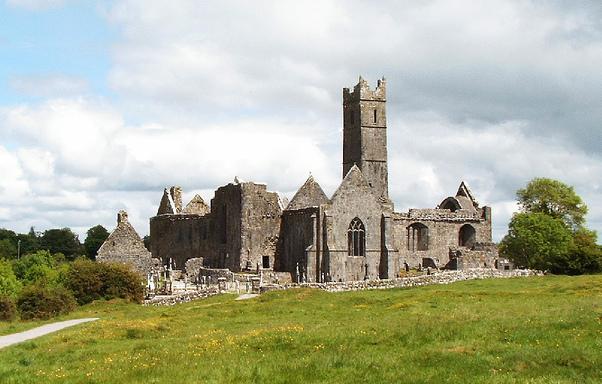
Quin Abbey in Quin, County Clare, where the O’Dea Family lived
I was 10 when she was born 1 February 1938 in Blackfoot, Castlebar – I remember it well – the feast of St Brigid and that is why she was Mary Brigid – and the young sister who grew up and became a Columban, had the disconcerting habit of letting me know that she loved me, but was not afraid to tell me that my life style of smoking etc. was not to her liking – but not just me as she once threatened a fellow schoolmate in primary school to leave her small brother alone or she would throw him into the Quin River off the bridge.
Due to our age difference, she next came into my life as a Columban Sister visiting in the Philippines and had no hesitation in telling me, smoking etc. was no good.
I told her I had given them up, until the cook at a dinner in St Joseph’s, Olongapo City, started searching around for an ash tray and planked it in front of me – the only smoker she knew around!
Having graduated with a BA from University College Dublin (UCD), Mary was assigned to teach Mexican immigrants in southern California and also promoted mission in churches on the weekends since the Sisters had very limited resources at that time. During summers she studied for her Masters in Chicago.
Mary was asked by the Columban Fathers to help in preparing an audio-visual lesson plan for the priests going around the schools in the USA for mission appeals – most of the priests had no experience in teaching, especially at elementary level and it took the poor teacher a whole day to get the kids back to some discipline after Father had tried to impress them with his heroic stories. The program which the teachers themselves could use was and is very successful.
Mary also had a lifelong personal complaint against the lack of inclusive language, especially in English, in the liturgy and the place of women in the Church – and always let it be known! She once had a small confrontation in Boston with a bishop who was saying Mass on a side altar and she answering in inclusive language. After Mass she followed the Bishop into the sacristy but it ended up in her being invited out to lunch! She even wrote to Pope Francis on these matters but no answer yet.
While in the USA she was also the Regional Superior for six years and also the novice mistress for some years.
And then to Lima, as a bursar, but soon got herself involved every weekend in a small community in Caliche the outskirts – a long journey by public transport – it did not help her lungs – the dust and damp - but that was Mary.
What has all this to do with our celebration of the Eucharist – of Christ’s life, death and resurrection? ‘The Triumph of Failure’ – Canon Sheehan. Editor’s note; This was a novel by Canon Patrick Sheehan, a parpish priest in Ireland who died in 1913.) It is a person, small per se and yet the communal effort, to spread the Good News – by her life, her faith, her perseverance, her ability and willingness to express it in her life, in her relationships with others, especially in her own family and in her Columban community. I am and others are the better for it.
There are times, when we tend to look back in nostalgia to the good days of Mission and figure we are finished and can do no more. I am reminded of the Gospel story of some of the apostles after the passion and death of Christ, sitting at home in Galilee at the like – you can picture them – John, Peter, James etc. lying on the sand hills – silently looking back on what might have been and saying ‘I’m going fishing’ – back to what we knew and can do – it is over – and then Christ appears and asks “Did you catch anything?” ‘No’ they said ‘Try again’ he said and here we are. Some of those apostles we really never heard of again –
And here we are today we honor and say thanks to one and can easily remember others; and her life and that of others like her, will bear the Good News of a loving Father and a dedicated Son to the world. They and we together will be those people.
We hope for others to follow – let us be those persons – either like our Mary or our Mother Mary standing at the foot of the Cross or our own St Columban who wrote – ‘Lord give light to my lantern’. Let us have light in our lanterns and that will be your gift and mine to our Mary. Ar dheis Dé go raibh a h-anam dílis, Slán abhaile. (May her faithful soul be at the right hand of God. Safe home.)
Two of the O’Dea family became Columban Sisters and two became priests. Sr Rita O’Dea SSC and Fr Seamus O’Dea of the Diocese of Killaloe are both deceased.

+ Sr Mary Justin Cassidy SSC
|
Sister Mary Justin Cassidy passed away peacefully in St Columban’s Nursing Home, Magheramore, County Wicklow, Ireland on Friday evening, 25 September 2015. The funeral Mass on Monday, 28 September, was followed by Interment in the Convent Cemetery.
Lord, we ask you to receive our Sister Mary Justin into the eternal joy of your Kingdom. As she endeavoured to honour you during her life, so now allow her to taste the everlasting happiness which you promised to your faithful followers. We ask this through Christ Our Lord. Amen
Sr Redempta Twomey SSC spoke these words at the funeral Mass of Sister Justin.
Somehow it seems fitting that our cherished sister, Justin, should slip away on a day in Autumn. Like the quiet falling of the leaves of the sycamore or the lime or the oak trees that we see around us here each day, she too has let go and moved on to another season; ‘another intensity… a deeper communion.’ A season of new and eternal life where death shall be no more. And so, even as we grieve her loss we thank God for the fruitfulness of Justin’s life, a fruitfulness evident even, or maybe particularly, in these final weeks. ‘never saw Sr Justin frown or be disgruntled,’ one of the carers here said. ‘She always met you with a smile, though she must have had pain at times.’
There surely is song and dance, even a céilí, in heaven today as those who have gone ahead of her welcome Sadie into that place of joy. And for you, her family gathered here, to whom she was devoted and in whom she took such pride, this is surely a consoling thought. The bonds of love and friendship are not severed by death; rather they are strengthened.
Our memories of Justin are of a woman whose fidelity and dedication informed everything she undertook. For example, for a time, before her final illness, she helped out in our dining room, a task far removed from the skilled work she did on the missions. But, and here is the measure of her faithfulness, she approached her charge with the same thoroughness, the same quiet dedication of someone who knew that the measure of one’s life is not the importance of the work, but rather the love with which it is done. Her model was Mary, and her heart, like Mary’s, was always focused on Jesus.

Ruttonjee Hospital, formerly Ruttonjee Sanatorium [Wikipedia]
Columban Sisters worked here for many years.
In Hong Kong, this skilled nurse ‘did all things well’, both in the Ruttonjee Sanatorium caring for tubercular patients and later in Sandy Bay where she looked after severely handicapped children. Doctors and visiting consultants remarked on her encyclopedic knowledge of the little ones. And well they might. Justin knew not only the name of each child, and the different pathologies, but knew their family, including the ‘apos’ or old grannies who were devoted to their little mites. Blessed with indefatigable energy, she would, in her free time, no matter how hot or humid the weather, visit their shacks, or their cramped rooms in high-rise buildings, to ‘sus’ out what would help them. For instance, a wheelchair to fit in the narrow door, crutches maybe, or calipers. She got her brother, Father Michael in Edinburgh to send her a particular frame for treating children with congenital dislocated hips and then got the hospital carpenter to make copies of it. Then there would be the letters. She must have pestered a great number of the principals in the Catholic schools to take in various children and educate them. How else were they to get on in frenetic Hong Kong? And, generally, she succeeded.
Justin’s fluency in Cantonese opened many doors but she was also able to speak ‘Hakka-wa’ - a dialect of fisher-folk who came over from the islands. They knew she understood them and would ease their way. Her Chinese nickname was ‘fat gong’, meaning ‘judge’. Far from being a derogatory appellation, it spelled out for the people her utter fairness and impartiality. Whether you were a consultant or a coolie, you knew that you would be dealt a fair hand by this remarkable woman. As the prophet Micah urged, Justin ‘walked justly,’ and treated everyone with the same respect and consideration due to each individual created by God. ‘What people are looking for now,’ the Pope said, some years ago, ‘are witnesses, not teachers.’ In Sister Justin, with her warm smile, her openness, we had a witness par excellence, a missionary whose life radiated Christ in all she said and did. No matter how tired or weary she was, after a hard day’s work, or after a day tramping in the blazing heat of Hong Kong, calling on the poor, she always spent time in silent prayer. It was the same here – Justin’s life was the Lord.
She loved music and in her younger days played the violin. She was also a very good cook and would produce a delicious meal when the occasion called for it. When the community had gatherings of past patients, all physically handicapped, Justin was a welcoming presence, her enjoyment mirroring theirs. And always – plenty of good Chinese nosh!
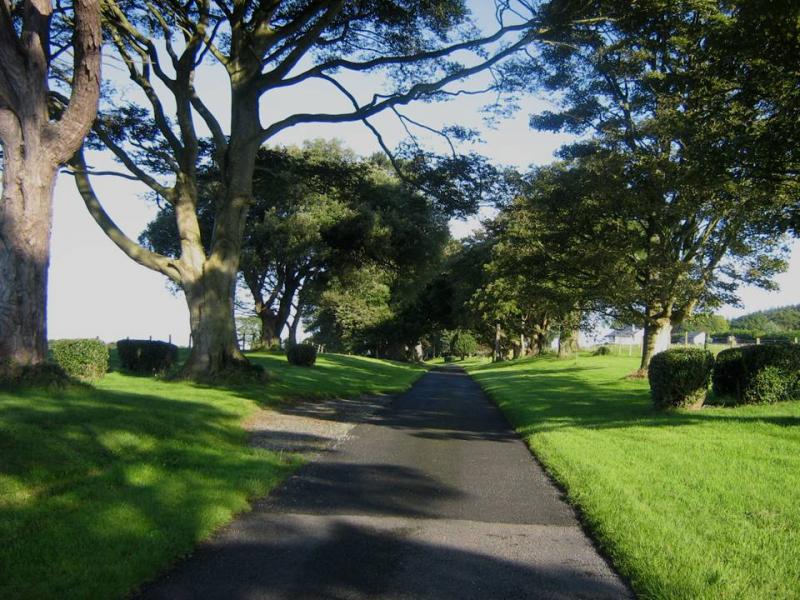
In the grounds of St Columban’s, Magheramore
Letting go, as we know, is an essential part of a missionary’s life, a readiness to pull up the tent pegs, dismantle the familiar and move on. Not easy when you have spent over 30 years among a people you love, a culture now woven into your own pattern, and a familiarity, you might say, with the overcrowded, over-populated, over-stretched hectic streets in Hong Kong. But when the time came for Justin to say ‘Goodbye’ she did just that, without fuss, looking only to what the Lord was asking of her. Her ministry in Scotland and later here in Ireland, were undertaken with unwavering dedication. She was the last Columban Sister to nurse in Dalgan Park, where again her diligence and care for the men in the Infirmary are remembered by those who knew her. ‘I thought I was well looked after before Justin came,’ confessed one elderly priest, ‘But now! My goodness!’ She was to show the same care to the sick and infirm here, the same generosity of spirit.
In her final illness, when both her mobility and her speech were impaired, we were touched by the gentleness of her spirit, her welcoming smile, her very real presence which spoke more than a million words. Here in the Nursing Home, where she was so wonderfully cared for by the nursing staff, she smiled her gratitude for all their thoughtfulness. Above all we saw grace at work in this unique and special woman in her acceptance of her condition. ‘I am all thine, my Queen, my Mother’; all was handed over, nothing was taken back.
As we say goodbye to our great-hearted sister, Justin, we do so in the sure hope of meeting her again in the Father’s house where, as, the prophet Isaiah reminds us, God will gather all his loved ones together to celebrate a great feast. No more tears, no more pain, only joy and love and laughter. And, no doubt, a grand céilí where the angels will join us as we step it out with Justin and all who are there before us in the Lord.
An Chúilfhionn / The Coolin (‘The Fair-haired One’)
Sister Redempta notes of Sister Justin, ‘in her younger days played the violin’. Very likely she played the very old Irish melody performed above by Irish violinist
Dearbhla Nolan.
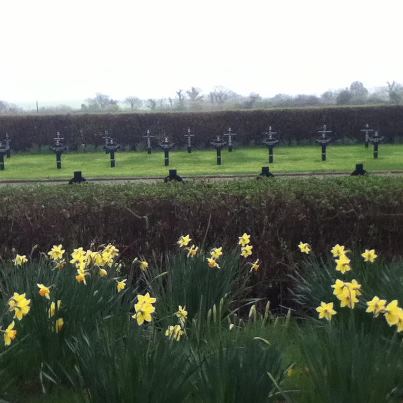
St Columban’s Cemetery, Magheramore

LIST OF DECEASED MEMBERS 2014
Obituary of Columban Fr Mark Kavanagh and funeral homily.
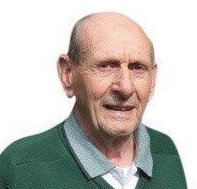
Fr Mark Kavanagh (1926 – 2014)
This photo was taken at a meeting of Columbans in 1988 in Scala Retreat House, Bacolod City.
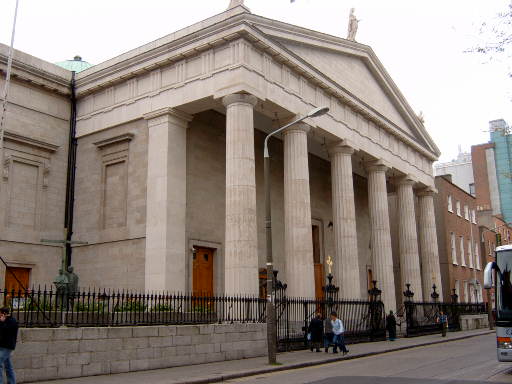
St Mary’s Pro-Cathedral, Dublin [Wikipedia]
Father Mark was born in the St Mary’s Pro-Cathedral Parish in Dublin on 27 January 1926 and lived on the North Circular Road. He grew up in a family of five sisters and three brothers. He received his primary and secondary education in O’Connell Schools.
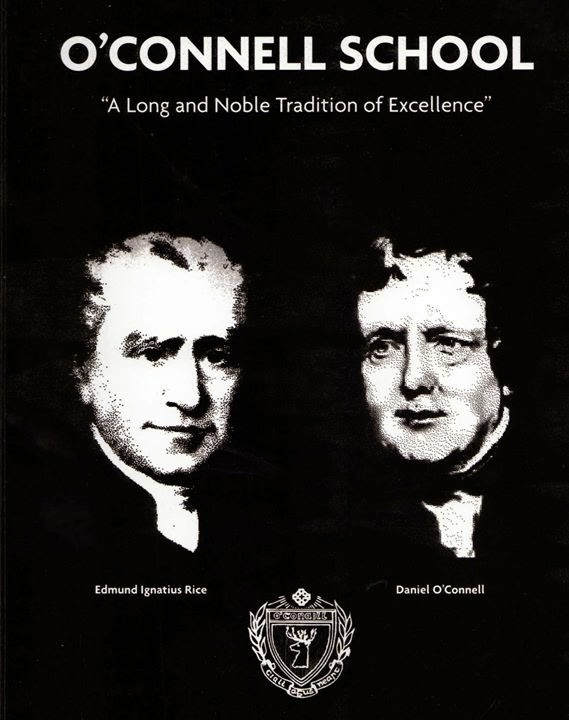
Blessed Edmund Ignatius Rice and Daniel O’Connell
He entered the Columbans in 1944 and spent the next seven years in St Columban’s, Dalgan Park, Navan. Ordained on 21 December 1950 he was appointed to the Philippines.
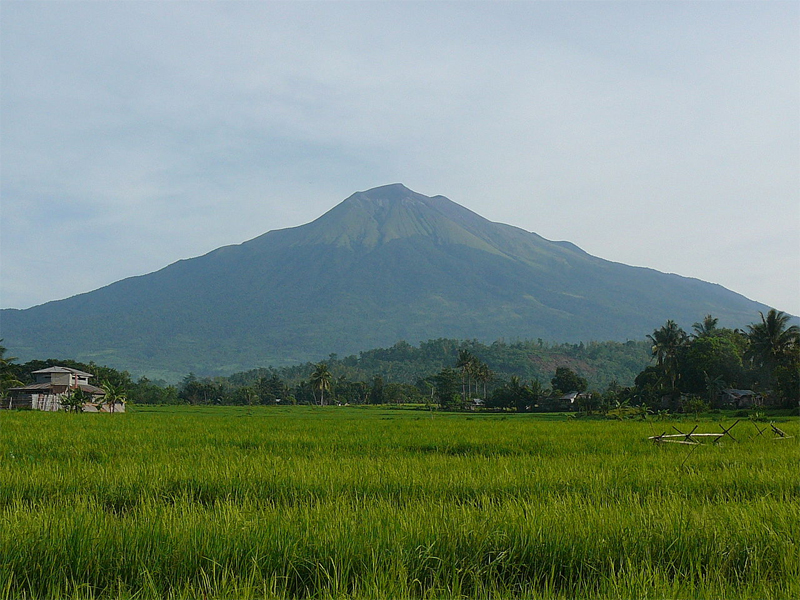
Mount Kanlaon, Negros [Wikipedia]
The island of Negros, specifically the southern part of Negros Occidental, then part of the Diocese of Bacolod and now the Diocese of Kabankalan, became Father Mark’s home for most of the next fifty years. The place sugar workers were to play in his life and ministry began with an early assignment as chaplain at Binalbagan-Isabela Sugar Company, known as ‘Biscom’.

Cut sugarcane [Wikipedia]
Along with pastoral roles Father Mark soon found himself as part of the Columban leadership team in the area, a position he held for the rest of his time there. This was surely a testament to the kind of man Mark was and in the turbulent times of the 1970s his wisdom, humor and human kindness helped maintain the bonds among the Columbans in Negros. This was particularly true during the saga of the Negros Nine when Fr Niall O’Brien, Fr Brian Gore and others, were jailed on trumped-up charges of murder. The violence and intimidation of those times was linked to the struggle of the sugar workers for a life beyond a feudal serf.
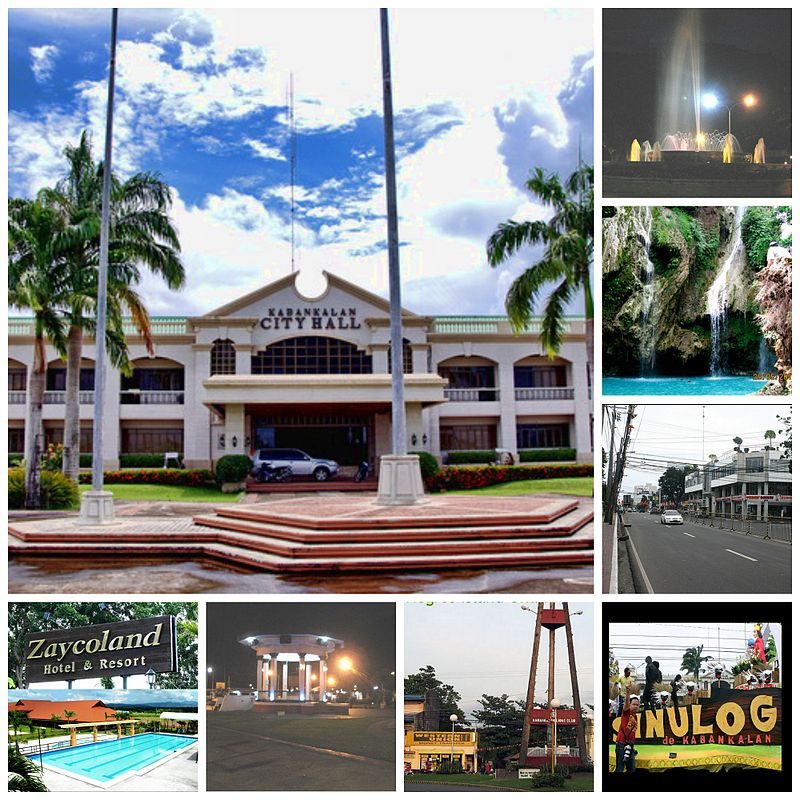
Kabankalan City [Wikipedia]
Father Mark was a friend and mentor of all young Columbans arriving in Negros at that time. Most of these served with him in either Kabankalan or Binalbagan. He was very supportive of new initiatives like Fr Niall O’Brien’s Retreat Movement for men and the decision of Fr Brian Gore and Fr John Brazil to move out from the parish of Kabankalan to live in the Barrio of Oringao in the mid 1970s to set up Basic Christian Communities in neighbring villages. These were later developed into 16 parishes in Southern Negros.
The visit to Negros of his brother Bishop James Kavanagh, then an auxiliary bishop of Dublin, his sister Breda and her husband Michael Mangan in the early 1980s was deeply appreciated by Father Mark. He constantly kept in touch with his family and when he retired to Ireland he chose to live with Breda and Michael until illness necessitated a move to the Columban Nursing Home in Dalgan Park. He will long be remembered for his humor and his supportive and caring role for all that continued until he died in Blanchardstown Hospital on 23 December 2014.
May he rest in peace.
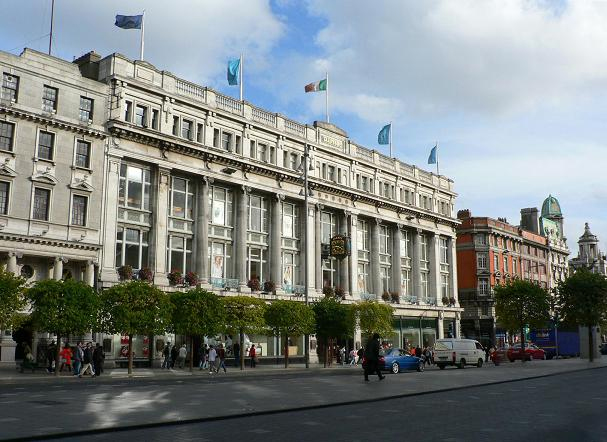
Clerys, O’Connell Street, Dublin [Wikipedia]
Many Columbans bought their suits and other clothing here.
Homily for Funeral Mass of Mark Kavanagh
Fr Donal Hogan, 26 December 2014
My abiding memory of Mark is when as Superior in Negros he lived in Batang, HImamaylan City, our HQ, welcoming us from the parishes and having the interest and the time and the concern to listen to each of us with all our concerns. He was a man of presence – being there for us. He didn’t feel he always had to be doing things. He was more for Being. Being present to – like Mary in the story of Martha and Mary. Martha was anxiously doing things for the Lord and complained that Mary was just sitting there doing nothing. Jesus said Mary has chosen the better part. For she was not distracted with many things but sat at the Lord’s feet listening to him and being with him. Mark was like that for us.

Christ in the House of Martha and Mary, Vermeer c.1654-55
National Gallery of Scotland, Edinburgh [Web Gallery of Art]
What a gift he was to the Columbans in Negros and to the and to the people of the parishes in which he served especially Kabankalan, Binalbagan and Cauayan. There will be much weeping in Negros for their beloved parish priest. The Filipino priests too will mourn him for he was always supportive of them and of the Sisters in all their initiatives.
Young Columbans always found him open and supportive of of new apostolic initiatives. Those in difficulties found him a rock of support. I think especially of Niall O’Brien, Brian Gore and all the Negros Nine when in jail on false charges. He constantly visited them and attended the court case – being present in the front row. Again his presence was a source of comfort and strength for them.
His sense of humour so often helped us to see things in their proper perspective and not take ourselves too seriously.At that time there was talk of the possibility of all of us being deported if we continued with our actions on behalf of justice. At that time Mark’s close friend Eugene McGeough had not come down from his mountain parish for a few months. Mark quipped, ‘If we are all going to be kicked out I hope someone remembers to go up and tell McGeough.’ Jerry O’Connor’s comment was, ‘If you see a blur at Manila Airport, that’ll be me.’
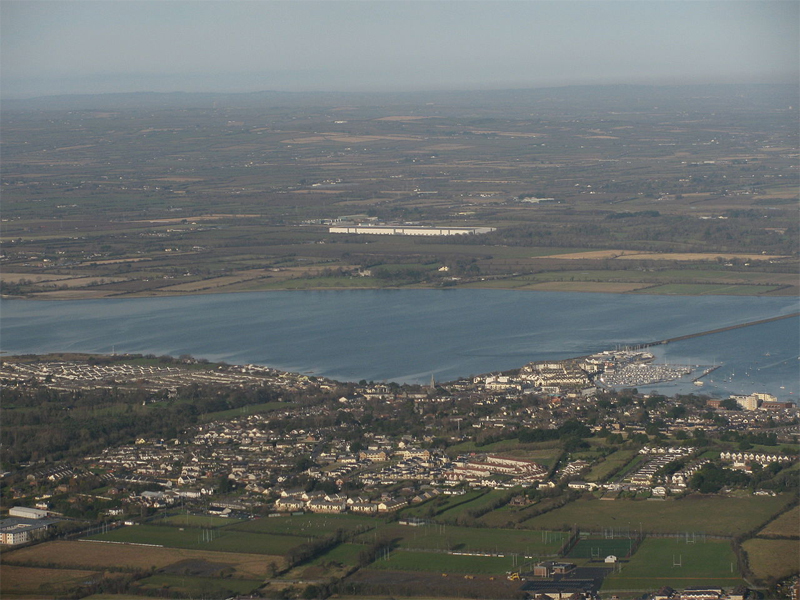
Malahide, County Dublin [Wikipedia]
The visit of his brother James, the Bishop, and his sister Breda and brother-in-law Michael meant so much to Mark. It gave him a great boost. For like St Paul he also had a thorn in the flesh – for Mark this was recurring depression. And the words of the Lord to Mark were the same as to Paul, ‘My grace is sufficient for you’. And I think this cross helped Mark to better understand the human frailty of others and to be compassionate to all. In 1997 when this illness became acute I accompanied Mark home to Ireland. When we arrived at Dublin Airport I knew everything was going to be alright. For there to meet him with a warm embrace were his brother Jim, sister Breda and Michael his brother-in-law. No wonder he chose to spend his retirement with them in Malahide, until eventually illness necessitated transfer to our Nursing Home here in Dalgan. The staff here loved his wit and banter and cared for him as if he was one of their own family.
As Redemptorist Pat Horgan said of Mark, ‘He was a great character, a great priest, a great Columban and a great leader.’
Jimmy Martin too described him as ‘a really great man whom we were blessed to have as Superior during the difficult times of Martial Law.’ He added ‘I am sure Brendan O’Connell, Ned Gill, Niall O’Brien, and Eugene McGeough are all jostling to greet him in the house of the Lord.’
Mark, thank you on behalf of all whose lives you have touched.
May you now rest in Peace.
Finally, as we used to pray in Ilongo, the language of Negros Occidental, HATAGI SIA, GINOO, SANG PAHUWAY MO NGA DAYON, Grant him eternal rest, O Lord.

O’Connell Monument, O’Connell Street, Dublin [Wikipedia]
A number of people described Father Mark to your editor as ‘a real Dub’. ‘Dub’ is the nickname for Dubliners. Like Father Mark, your editor is also a ‘Dub’ and went to the same school as he did, though some years after him. The school, and Dublin’s main street, are named after Daniel O’Connell, ‘The Liberator’.
The unofficial anthem of Dubliners is the song ‘Molly Malone’, also known as ‘Cockles and Mussels’. Here is a version in Dutch by Ancora, which your editor came across only the other day. I’m sure that Father Mark would have enjoyed it. I know that he wasn’t averse to a party!

Columban Fr Francis Carey RIP
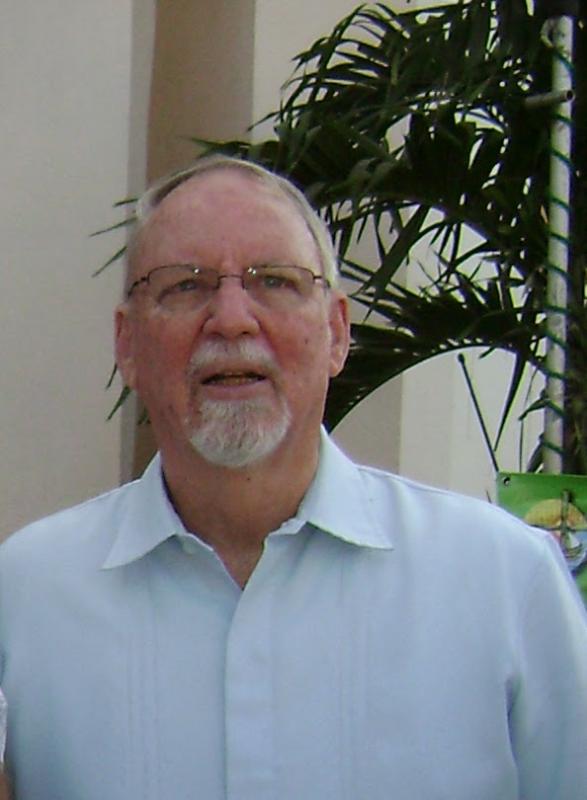
Fr Francis Carey
(19 August 1937 - 6 December 2014)
‘He had a gentle presence and a kind heart.’ That is how Fr Dan O’Malley, Regional Director of the Columbans in the Philippines, described Fr Francis Carey when he informed the membership of his death on Saturday 6 December. Father Frank was diagnosed with a form of cancer late in October. His death has been a great shock to all who knew him.
Father Frank was the son of Paul and Marion Carey and was born in Melbourne, Victoria, Australia. He attended a secondary school there run by the Christian Brothers. He received his formation as a Columban in Sassafras, Victoria, and in Wahroonga and Turramurra, New South Wales. He was ordained in St Patrick’s Cathedral, Melbourne, on 13 December 1962 by Archbishop Ernest Victor Tweedy, at the time the Archbishop Emeritus of Hobart, Tasmania.
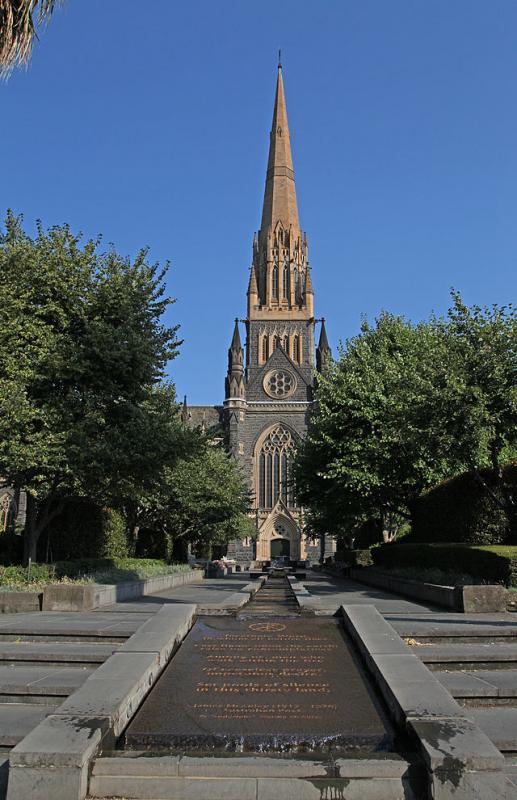
St Patrick's Cathedral, Melbourne [Wikipedia]
Father Frank often recounted the difficulty in finding a bishop and setting a date for his ordination, since all the active bishops in Australia were at the first session of the Second Vatican Council, which ended on 8 December. His father, a solicitor (lawyer), phoned the Columban superior at the time in Australia telling him that he understood the difficulty but that he, Paul, was responsible for arranging the family celebration and needed to know the date as soon as possible. The date was set very quickly!
A Columban who knew Father Frank very well wrote, ‘He had a great relationship with his father. When he’d arrive home on holidays from the seminary Frank and his Dad would spend the whole night catching up. He got many of his priorities and values from his Dad. He hated to see people bossing others around.’
St Michael's Cathedral, Iligan City [Wikipedia]
Father Frank arrived in the Philippines in September 1963 and was assigned to Mindanao. After language studies he spent more than five years in parish work, He served for relatively short periods in Oroquieta City and Bonifacio in Misamis Occidental, Kinoguitan, Balingaon and Linugos, Misamais Oriental, and Malabang, Lanao del Sur. He then spent almost four years in St Michael’s, Iligan City, now the cathedral of the Diocese of Iligan. There he formed a great friendship with the late Fr Peter Steen who was parish priest at the time.
Father Peter had a very sharp wit and once remarked at the breakfast table in Manila when we got news of the death of a Columban priest in Ireland who had been in the Philippines for many years and who tended to be on the strict side, ‘He’ll probably find that God is a lot kinder than he thought he was’. When told of this in an email some years later Father Frank responded, ‘The statement about X was the ultimate Steen. He certainly believed in a God of understanding.’
Father Frank might have been speaking about himself. One who knew him very well described him as ‘unflappable, calm and non-judgmental. He was balanced, weighed things up and saw both sides. He allowed people to have their point of view and could sit with ambiguities and opposites. But he had great courage and always made up his own mind.’
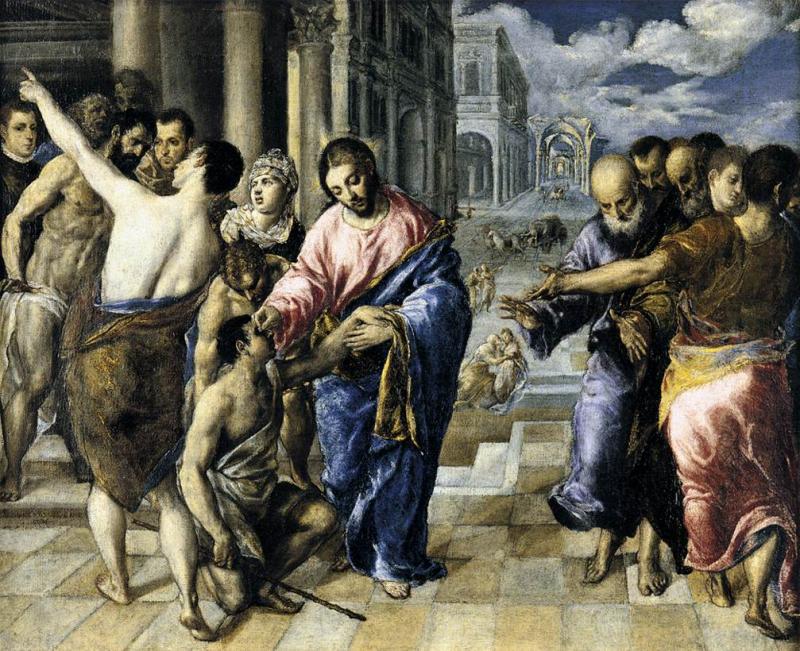
Christ healing the blind, El Greco, 1570-75
Galleria Nozionale, Parma, Italy [Web Gallery of Art]
Fr Carey’s life as a priest was guided especially by Luke 4:18-19: ‘”The Spirit of the Lord is upon me, because he has anointed me to bring glad tidings to the poor. He has sent me to proclaim liberty to captives and recovery of sight to the blind, to let the oppressed go free, and to proclaim a year acceptable to the Lord.”’ A friend noted, 'Even with the ecology it was about healing, reconciling and liberating.’ Luke 4:14-19 was the gospel read at his request at the funeral Mass in Our Lady of Remedies Church, Malate, Manila, on 11 December, with the passage Jesus read, Isaiah 61:1-3, as the First Reading.
This is what guided him when he spent nearly seven years, from 1969 till 1976, in Australia, working as a chaplain to overseas students, promoting the work of Columbans throughout the world and seeking vocations to the missionary priesthood. He could be creatively practical. He once spent a month in an outback parish in Australia and told the people on his first Sunday there that he couldn’t cook and would appreciate it if each day of his stay a different family would invite him to their home for a hot meal. The people were delighted to do so and around 30 families by welcoming this friendly missionary priest learned quite a bit about the work of the Columbans in the Philippines.
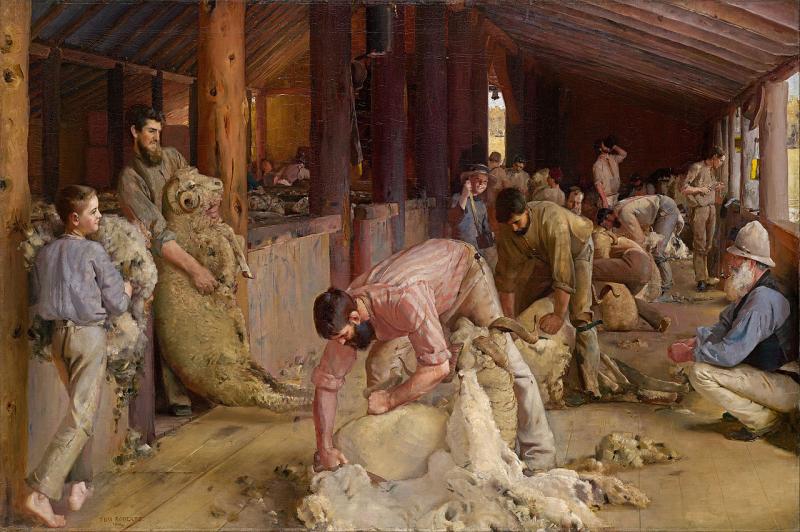
Shearing the Rams, Tom Roberts, 1890
National Gallery of Victoria [Wikipedia]
On his return to the Philippines in 1976 Father Frank spent nearly a year in the parish of Tambulig, Zamboanga del Sur, before moving to Manila where he was to spend most of the rest of his life, apart from a stint on mission promotion in Australia from 1991 to 1996 in Victoria, Western Australia and New South Wales. From 1981 until 1991 he worked with third-level students in Manila, with periods as chaplain in Philippine Women’s University, Far Eastern University, and with Student Catholic Action, which was founded by Columban Fr Edward J. McCarthy in the 1930s.
Sanctuary, Our Lady of Remedies Church, Malate [Wikipedia]
From 1996 till 2002 Father Frank was an assistant priest at Our Lady of Remedies Parish, Malate, Manila. The Center for Ecozoic Living and Learning (CELL) and the Eco-Farm Retreat Centre in Silang, Cavite, south of Manila, the brainchild of Columban Fr John Leydon whose vision was shared by Elin Mondejar, the owner of the land where CELL is located. Father Frank was part of this from its early days. This Center demonstrates permaculture and organic farming and zero waste management in place of landfill. Malate Parish was also involved in this project. Fr Dominic Nolan, also from Melbourne and deeply involved in the project for many years, described Father Frank as ‘the glue that kept CELL together.’
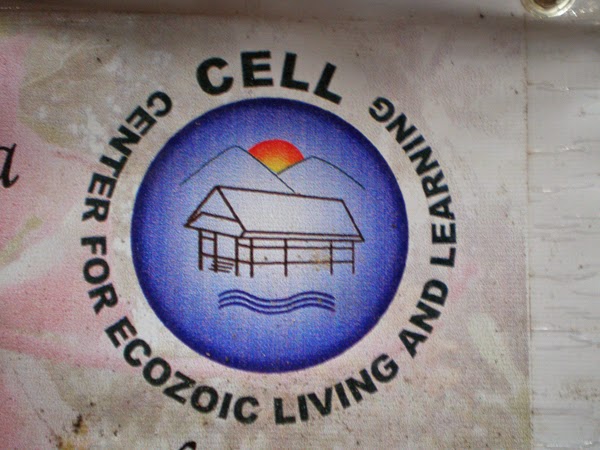
A Columban employee who visited CELL in 2009 wrote in an online tribute, ‘Thank you for giving me inspiration in advocating and living a life dedicated to nourishing the earth and everything that God put in it. I remember my short time at CELL, feeling the earth, inhaling the freshness of the surroundings, enjoying the meals that were served to us straight from the lush garden, everything. I will never forget the excitement I saw in your eyes when you munched on some mint leaves just to convince us that these things are actually good and can nourish our bodies.’ This same person, a young married woman, said to me on hearing of his death, ‘I would have loved to have asked him to adopt me!’ This echoes what St Athanasius wrote in his life of St Anthony the Abbot: ‘And so all the people of the village, and the good men with whom he associated saw what kind of man he was, and they called him “The friend of God”. Some loved him as a son, and others as though he were a brother.’
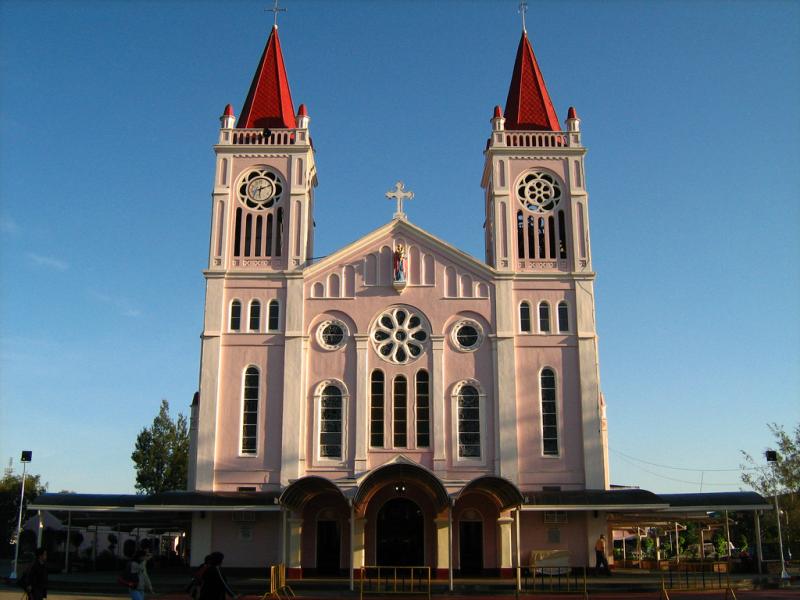
Our Lady of Atonement Cathedral, Baguio City [Wikipedia]
Father Frank, who over the years quietly helped raise a considerable amount of money for the education of students, continued to be involved in CELL even though in recent years he was in charge of the Columban house in Baguio City, in the mountains of northern Luzon. It was there that he began to feel ill in October and returned to Manila.
Pope Francis wrote in Evangelii Gaudium, The Joy of the Gospel, ‘When we live out a spirituality of drawing nearer to others and seeking their welfare, our hearts are opened wide to the Lord’s great and most beautiful gifts (No 272).’ May the gentle heart of Fr Francis Carey be opened wide to the gift of eternal life.
Father Frank loved jazz music. In the video above Stéphane Grappelli (on the
left), one of the greatest jazz violinists, plays with Yehudi Menuhin, one of
the great classical violinists. Yehudi Menuhin once lived in the house in
Sassafras, Victoria, where Father Frank began his formation as a Columban
seminarian.

Cheerful Givers
Cheerful Givers
‘Each of you must give as you have made up your mind, not reluctantly or under compulsion, for God loves a cheerful giver’, St Paul tells us (2 Corinthians 9:7). God reveals himself through ‘cheerful givers’, who can be found on opposite sides of the world. Cynthia Empleo of our Mission Office in Manila tells us the story of the long involvement of Mrs Leonor A. Tomines, now 93, with the Columbans, for many years as a laundry woman like the woman in the painting by Degas above, and for many more years as a benefactor. On the other side of the world, in Ireland, Columban Sr Mary Nolan tells us the story of Kathleen Hogan, who grew up in difficult circumstances and was a great supporter of the Columban Sisters. Kathleen has now gone to her reward. Whenever we meet persons such as Leonor A. Tomines and Kathleen Hogan we can say with Sister Mary, ‘I had the privilege of coming to know the greatness of one of God’s little ones.’ Fr John Blowick, Co-founder of the Missionary Society of St Columban and Founder of the Missionary Sisters of St Columban, used to say that the pennies of the poor were more valuable than the pounds of the rich. He welcomed both but understood the power of God’s love in the cheerful generosity of such persons as Leonor and Kathleen. Please remember all our benefactors, living and dead, in your prayers. |
A Missionary Encounter in Dublin
By Sr Mary Nolan SSC
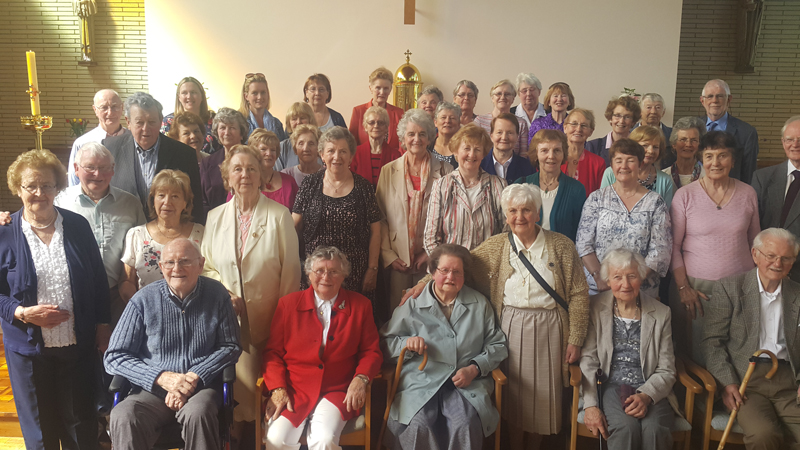
Sale of Work volunteers
The author has served as a Congregational Leader of the Missionary Sisters of St Columban and was missioned in Peru for many years. She is presently missioned in Ireland.
Some time ago we got word that a regular visitor to our Sale of Work had died. [Editor’s note: A sale of work is a sale of goods and handicrafts made by the members of a club, church congregation, etc, to raise money. Such sales are common in Ireland and the Columban Sisters hold one in Dublin every November.) Her name was Kathleen Hogan and she lived in Leixlip, west of Dublin.
I happened to be free and was able to attend her funeral. I knew nobody there but was soon befriended by Kathleen’s friends. The funeral Mass was a joyful celebration and gradually Kathleen’s story was told. She seemed to have had a great devotion to ‘Sales of Work’ and bought/gathered up all she could so that she’d have Christmas gifts for all those she knew – and didn’t know.

As a child she was taken into care by the Good Shepherd Sisters in New Ross, County Wexford, in the southeast of Ireland, in what was called a ‘Magdalen Home’. Contrary to the many horror stories that have emanated from those homes, Kathleen never had a bad word to say about her treatment there. And we know that her memories were happy ones because she asked that her ashes, following cremation, would be buried by the Sisters in the grounds of the home where she was raised. True to her custom of giving out gifts, her dying wish was that all who attended her funeral would be treated to a ‘proper’ lunch in the local hotel.
I had the privilege of coming to know the greatness of one of God’s little ones. May she rest in Peace!
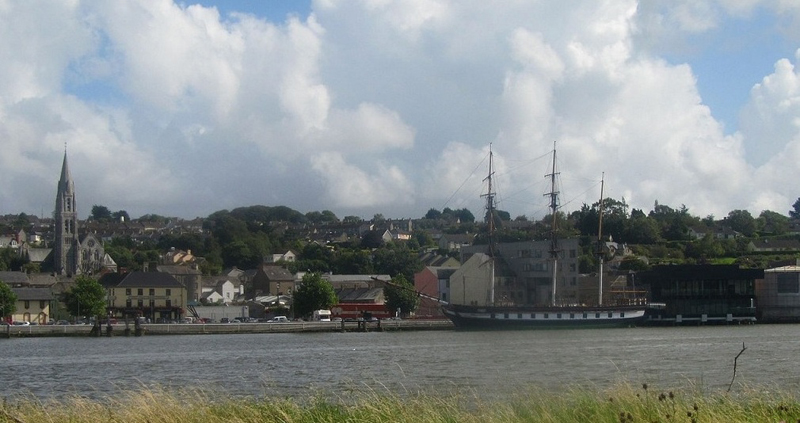
New Ross, where Kathleen is buried [Wikipedia]
‘The Lady of the House’By Cynthia Empleo
The author was a Columban Lay Missionary in Fiji from 2000 until 2003. She now works in the Mission Office at St Columban’s, Singalong Street, Manila. I was at the Mission Office in Singalong for my job interview on 24 March 2014 when the phone rang. That was Mrs Tomines asking if someone could drop by her house next day to pick up her donation. So my first job on my first day of work was to pick-up the quarterly donation of Mrs Tomines. Armed with pen and receipt, I navigated my way to her home and met a fine lady with a motherly smile. After enduring the heat of the sun in the traffic of Metro Manila I found her welcome refreshing. As a Columban Lay Missionary who was sent to immerse myself in the lives of people other than my own, in Fiji, I have always seen the value and importance of making stories like that Mrs Tomines heard. So I took it upon myself to pay her a visit on 1 September 2015 not just to collect her donation but most of all to get to know her story and experience of working for the Columbans. It was a pleasure to listen as Mrs Leonor A. Tomines reminisced about how she had started working with the Columbans. ‘There was a flood and all their things and cabinets were soaked in water and mud. Back then, all their laundry work was done in Cavite on a weekly schedule. After the flood, they looked for a laundry help. I was recommended because I could speak good English. That’s how I met the Columbans.’ Mrs Tomines was the ‘Laundry Lady’ (as she worded it herself) of the Columbans back in the 1970s when the Columbans working with Student Catholic Action had a house in Santa Ana near La Concordia School. She worked with them for seven years and only left because the Columbans were leaving the Santa Ana house. When they asked her what she planned to do, she said, ‘I would like to put up a small sari-sari store in front of my house.’ She was a widow with ten children. Her husband had passed away when the youngest child was 8. The Columbans’ response was a great surprise for her. ‘How much do you need for you to start a sari-sari store?’ asked Fr Sean Connaughton. ‘It was through them that I was able to acquire that store’, she narrated, pointing at the front of her house. ‘This helped me in my struggle to raise my children. I will never forget what the Columbans did for me and my children. They treated me as their equal and would introduce me to their visitors and relatives as “The Lady of the House”. Sometimes they would tell me, “Leonor, you have made this place livable” because I was also the one cleaning their rooms’. She said giggling with this recollection. When asked about her fondest memory of the Columbans, Mrs Tomines said, ‘When they came to the wedding of one of my children. All my neighbors were in disbelief that our humble house, (lupa pa ang sahig namin noon), was visited by many white priests’. She continued sharing, ‘That old mahogany cabinet was also a gift from them. They wanted to give me the pair but my house is small so I only took one. Also, when my husband died, three Columban priests concelebrated the funeral Mass with our parish priest. They really touched my heart with their kindness. They were Fr. Sean Connaughton, Fr John Keenan and Fr Nicholas Murray.” I was curious as to why she donates such an amount when she needs money to buy her maintenance medicines. Her response moved me a lot. ‘Ah, don’t worry. Every time my children send me money for my medicine, I keep some and call the Columbans. They know about it. This is my chance to repay the Columbans for their kindness to me’. Mrs. Leonor A. Tomines is enjoying the fruits of her labor having all her ten children working and with their own families. At 93 though, she finds it hard to walk around the house without the help of her walking chair. A week before this interview, she called me about her regular donation and requested me to hurry because she had been feeling very weak lately. Worried about her wellbeing, I suggested ‘an interview with photos for the Magazine’ which she took very positively. For the interview she wore a bright colored dress with her hair up and done. No sign of the previous weakening that she had told me about. I guess I made a good suggestion that time. |
Columban: A Man for All Times

Irish stamp in honor of St Columban
This is the second of two articles on St Columban by a Columban priest who wishes to remain anonymous. The first appeared in our September-October 2015 issue.
The parish church where I come from has parish records dating back to the early 19th century. As a young altar server, I got a job from the sacristan during the summer school-holiday months, to help Irish Americans and other visitors trace their family ancestors. I would open the pages of Baptismal and Marriage Registers, and the smell of old books would perfume the air. Our visitors manifested a curiosity and an inherent longing to connect with their past as they became immersed in piecing together family history. You could almost see them become one in mind and spirit with persons they had heard of, but had never met in the flesh. They were family.
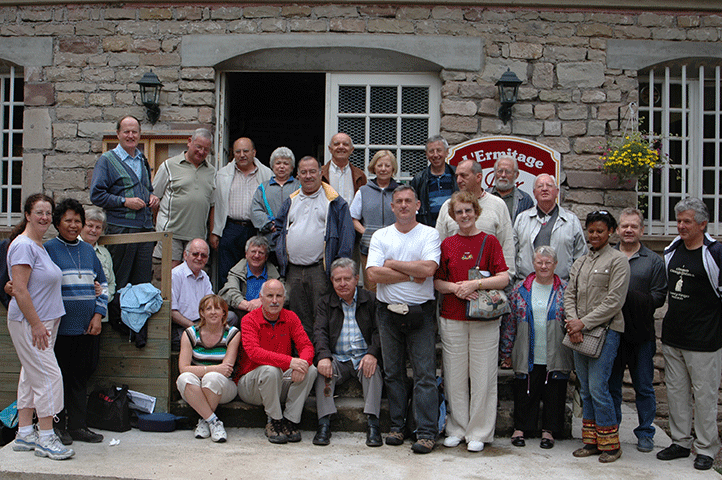
A pilgrimage to Columban sites
Many scholars, writers and historians have gone through manuscripts, documents, commentaries, while in the process of writing about St Columban. This year as we remember and celebrate his death 1,400 years ago, it is an opportunity to draw from the spiritual and historical wells of St Columban’s life and tradition. It is an invitation to log into his inspiration and into the values we share with him as missionary disciples and followers of Christ.
It is not just a connection with one person, but with a period of Celtic monastic history that has influenced and laid the foundation of much that we celebrate and live today as missionaries. We are proud to speak of St Columban and there are many things from his life and times that we cherish.
He is the father of modern-day Europe. Robert Schuman, one of the founding fathers of European unity, who in cooperation with Jean Monnet drew up the internationally renowned Schuman Plan in 1950, said that St Columban ‘is the patron saint of those who seek to construct a united Europe’.

As a missionary monk, St Columban did not stand idly by and support the status quo, but rather took the prophetic option of speaking out against abuses of civil or ecclesiastical power. While his monastic foundations were on the outskirts of towns and villages, this did not prevent him from getting involved in the political upheavals of the day. His ability to dialogue with the authorities of his time without compromising the Gospel message is both an inspiration and a challenge for today’s Church ministers.
He dialogued openly with the Pope and did not resist the opportunity to advise him on various issues, He challenged the local French bishops about their lifestyle and their commitment to be of Christ rather than promoting their own interests and power. The ideal of communion was at the center of all his dealing with the local Church and the Papacy. While he argued for diversity in the dating of liturgical feasts, especially that of Easter, there was no compromise when it came to communion.
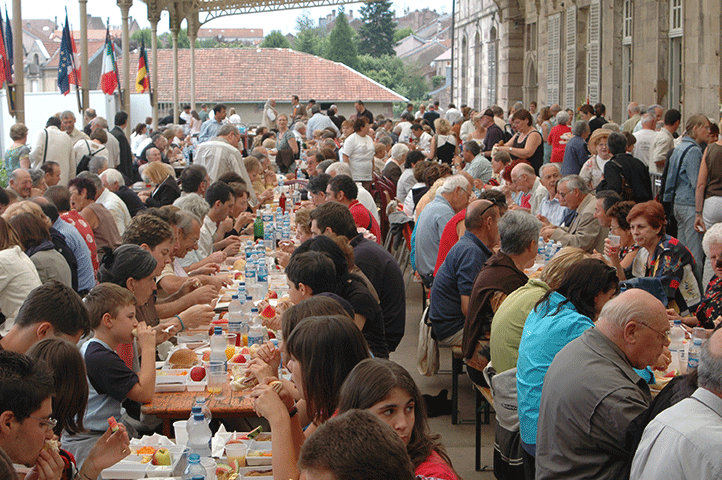
Pilgrims sharing a meal in Luxeuil
For St Columban, the Church’s communion was celebrated in the diversity of cultures, be it Celtic, Roman or Frankish and in the gathering around the Eucharist table. Pilgrims going to Bobbio, in northern Italy and where the saint died on 23 November 615, for the feast of St Columban are offered a crust of bread to bring back home with them. This bread is a sign of communion of all gathered round the table of the Lord, and of the communities from which they come.
St Columban gives us an understanding of the sacrament of reconciliation. It was he who introduced into the Celtic monasteries in Europe the practice of individual confession and private penance, which was later adapted by the whole Church. Previously, sins were confessed in public and in front of the whole community. Now the father Abbot took the place of Christ; clothed in the role of the servant and master, stooping down to embrace the penitent monk and in the name of Christ forgiving him his sins.
On the feast of St Columban in northern Italy there is a tradition of blessing motorcycles, cars, and trucks to ask the saint’s protection for safe driving. It has its origin in the image of Columban as a pilgrim, one who journeyed over dangerous lands. In 2002, St Columban was officially declared patron of motorcyclists, thanks to Bishop John Oliver, a Anglican bishop of Hereford, England, from 1990 to 2003, and biker, who initially suggested it. In the words of a Harley Davison biker, ‘If Columbanus were alive today I imagine him riding a Harley Fat Boy. It’s got a 1,584cc pushrod V-twin engine; six gears, massive torque, has no saddlebags and would be ideal for itinerant monks flying those twisty roads of Europe’.
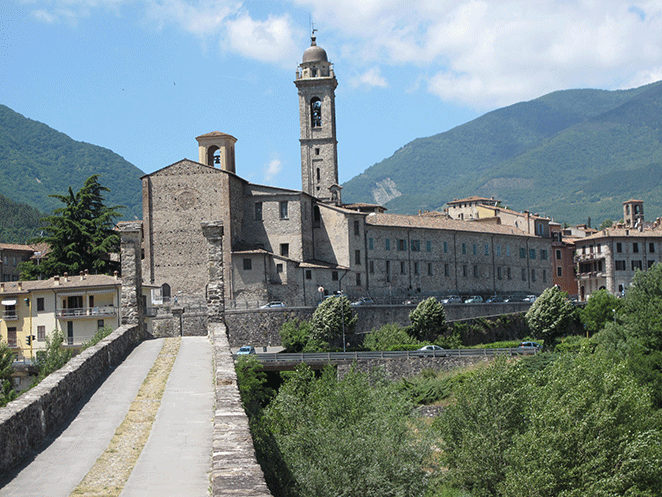
Bobbio
St Columbanus and his monks paved the way for many forms of meditation and contemplative prayer that are practiced today by people both Christian and non- Christian. He was Christ-like in his prayer and presents us with a way of praying, that of keeping vigil. He invites us to sit at the feet of the Master, to ‘take care to be silent, empty the mind’, watch and stay, listen to the silence, engulf oneself in the cloud of nothingness and there encounter our God.
St Columban, missionary, contemplative, prophet and teacher is part of who we are.
This article appeared in the March-April 2015 issue of Far East, the
magazine of the Columbans in Ireland and Britain.
You will find the music and lyrics
here. San Colombano, pioggia di luce, San Colombano, luogo di fede, spicchio di luna.
San Colombano, composed by Ivan Cobbe
strada che sale, filo di voce,
piccolo affresco bianco sul Leno.
San Colombano, pochi pensieri,
freddo silenzio, vita di ieri,
storia e leggende che si rincorrono.
San Colombano, cuore d’Irlanda, portafortuna.
San Colombano, cielo amaranto
rosa d’inverno, come d’incanto
chiusa nel ventre di Trambileno.
St Columban, rain of light,
road salt, a whisper,
a small white fresco on Leno.
St Columban, a few thought,
cold silence, a life from yesterday,
history and legends that run.
St Columban, a place of worship, a crescent moon.
St Columban, the heart of Ireland, a door to blessing.
St Columban, an amaranth sky
A winter rose, as if by magic
enclosed in the belly of Trambileno.
Fr Bernard Toal: First Columban Centenarian

Fr Bernard Toal, the first Columban to reach the age of 100, was born in Philadelphia, Pennsylvania, USA, on 17 October 1915 but grew up in nearby Gloucester, New Jersey. He was ordained in Buffalo, New York, on 18 December 1943. Because of World War II he spent the early years of his priesthood in the USA.
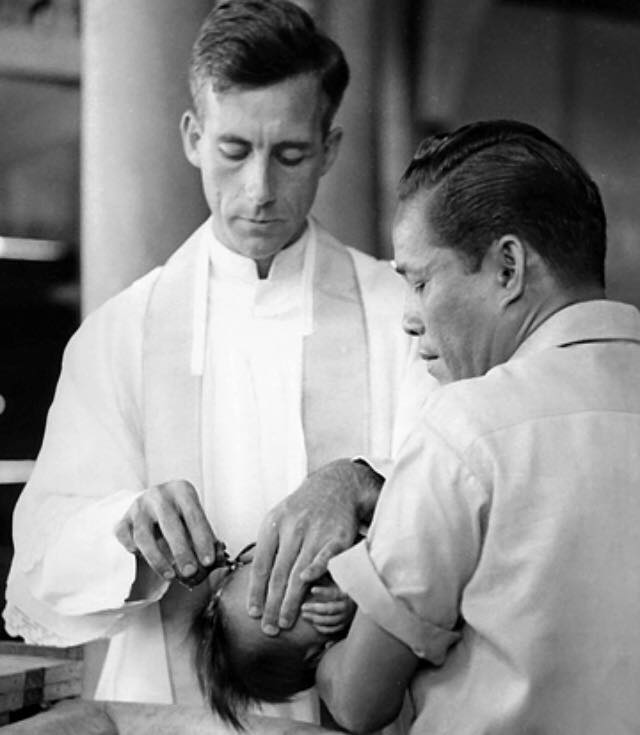
Fr Toal in Ozamiz City (1947-51)
From 1947 to 1951 he was based in Ozamiz City, Misamis Occidental, Philippines, where he taught in Immaculate Conception College, now La Salle University Ozamiz. From 1951 until 1968 he was in St Columban’s, Bristol, Rhode Island, USA, most of that time as Director of Probationers, Columban seminarians on a year of intense spiritual formation.
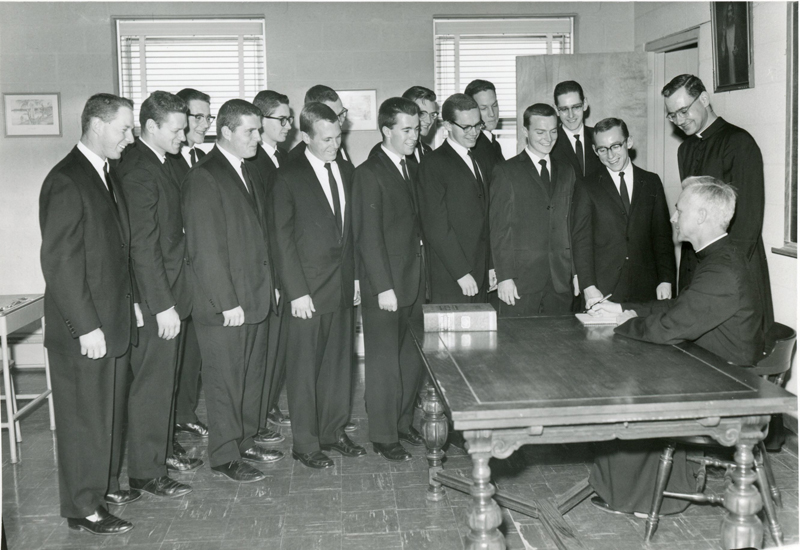
Fr Toal, seated, with Columban seminarians, Bristol, Rhode Island, USA, 1962-63
Father Toal worked in Peru from 1968 till 1979 when he was reassigned to the USA where he worked in parishes in California, Texas and New Mexico, the last being St Mary’s, Fontana, California, where he worked from 2001 until he retired to Bristol, RI, in 2011.
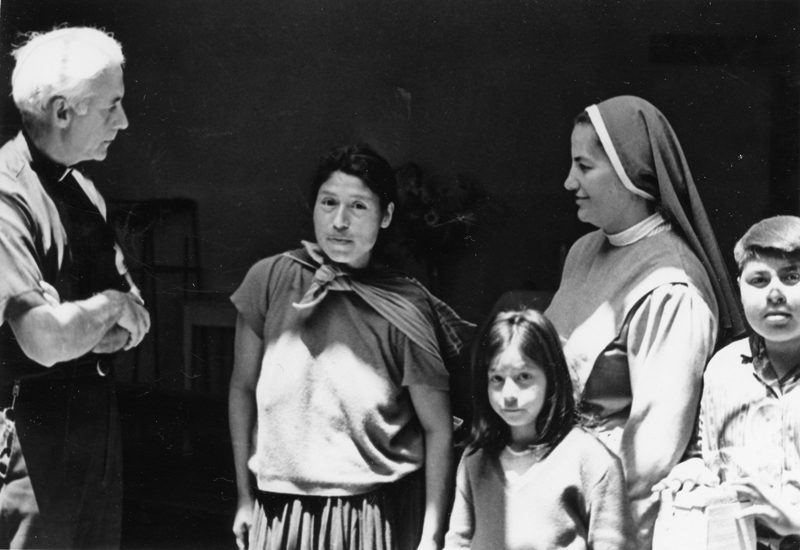
Fr Toal with friends in Lima, Peru (1968-79)
We thank God for Father Bernard’s long life and for his faithful service as a Columban missionary priest. Ad multos annos!
Mass in St Columban’s, Bristol, RI, USA, on 17 October 2015
on the 100th Birthday of Fr Bernard Toal.
I Met St Joseph in Manila
By Columba Chang Eun-Yeal

Columba Chang, 2012
We first published this article in the November-December 2003 issue of MISYON. It is a story that can be told and re-told over and over again. The author, a Columban Lay Missionary from Korea who was assigned to the Philippines for many years, is now based in Myanmar.
There may be as many as seven million Filipino overseas workers spread all over the world. They greatly help our country’s economy by the money they send home. However sometimes we seem to take them for granted, thinking that they have an easy life abroad. Read Aling Maria’s story below and find out the dangers our OFWs face and the abuses they experience. We thank ‘Mang Pepe’ for his help in writing this article in which we’ve changed the names.
I met Mang Pepe and his daughter Ligaya through my work with Caritas Manila. I visit the family regularly. They live in a poor part of the city and Mang Pepe makes a living by doing odd jobs. My work takes me to families affected by HIV/AIDS. I knew Mang Pepe’s story before he shared it with the congregation at the Saturday evening Mass in Baclaran Church on 7 December 2002 at the end of a celebration organized by Caritas Manila for World AIDS Day.
Baclaran Church [Wikipedia]
A Greener Pasture
Mang Pepe and his wife Aling Maria were having difficulties putting their five children through school. This sometimes led to arguments. Eventually Aling Maria decided to work in the Middle East. She felt happy when accepted as a nursing aide with a two-year contract in the UAE. She prepared her documents. She and Pepe sold their house and lot for her fare and placement fee. She flew out on 5 February 1989, full of hope for her family’s future financial stability.
Aling Maria soon discovered that her contract as a nursing aid was terminated just a few months after she arrived, without any hope of renewal. But she didn’t want to go back to the Philippines with an empty pocket. She decided to take the ‘TNT’ route. She managed to find a series of jobs as a saleslady, cashier and office worker.
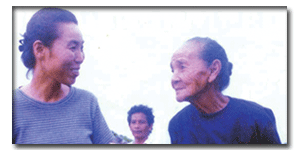
Columba Chang, left, with friend in Manila
Hope turns into a nightmare
As an illegal worker, she was often subjected to different abuses like underpayment, long hours of working without a day off and so on. But the worst thing was when one of Aling Maria’s employers took advantage of her and made her pregnant. When she came home to the Philippines in October 1993 Mang Pepe and the family were very shocked to learn that Aling Maria carried a child in her womb. She hadn’t mentioned anything about this before. However, despite this they still welcomed her and the child with joy . . . but deep in their hearts there was a shadow of sadness, fear and uncertainty.
After a few days the tabloids reported that three Filipino overseas workers had been sent home because of being infected with HIV, the virus that causes AIDS – and that one of them was Aling Maria. These stories, and the rumors they spawned, continued for a month. Some relatives, neighbors and friends rejected Aling Maria. The children of Mang Pepe and Aling Maria were torn apart. Some wanted to quit school and leave the area. The family suffered greatly because of the stigma.
Interior of Baclaran Church [Wikipedia]
Confirmed HIV
Aling Maria and Mang Pepe went to the Department of Health (DOH) for a series of blood tests. The tests confirmed what Aling Maria knew already, that she and her ‘little mercy child,’ as Mang Pepe called his wife’s daughter had HIV. The doctor gave them counseling and advice and information about HIV/AIDS.
Ligaya is born
Aling Maria decided not to stay in the hospital and continued to work as a pension plan insurance agent. In time she gave birth to a baby girl whom they named Ligaya. Gradually, however, Mang Pepe saw his dear wife turning into a picture of misery as she suffered from constant headaches and flu. Aling Maria was hoping for a miracle that would ease her agony. It was not to be. The HIV developed into full-blown AIDS. Her appetite disappeared until she couldn’t eat anymore. Mang Pepe and the children saw Aling Maria slowly dying. He prepared the family to accept her death as the will of God. She died on 15 December 1997, aged 46.
Like everyone else in Baclaran Church, I was deeply touched by Mang Pepe’s story, even though he had told it to me many times. I was touched by the great love of this simple man who accepted as his own a daughter who was the fruit of the brutal violation of his wife. Mang Pepe is ‘Tatay’ to Ligaya. Her schoolmates sometimes tease her because her features clearly show her Middle Eastern origins. But her Tatay stands by her, as do her brothers and sisters.
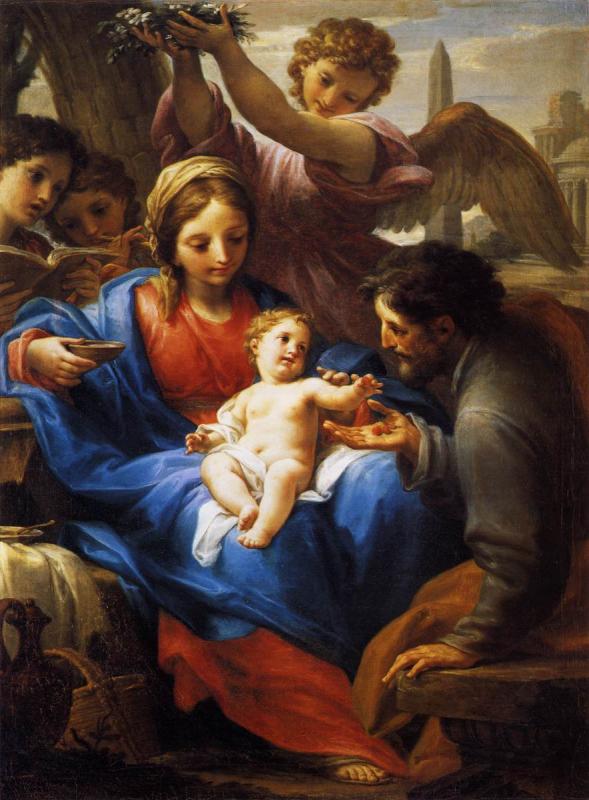
Rest During the Flight into Egypt , Francesco Mancini
Pinacoteca, Vatican City [Web Gallery of Art]
Proud to be her Tatay
Tatay Pepe is proud of Ligaya’s singing ability and smiled as she sang at the celebration in Baclaran. Ligaya is very proud of her Tatay and knows the depth of his love as a father. She has very uncertain health and is often in the hospital. The shadow of AIDS hangs over her.
St Joseph named Jesus, the Son of Mary, and thereby became his legal father. He loved Mary, his wife, and raised Jesus as his own son. Mang Pepe has gone through the agony of knowing that his wife was violated overseas, after dishonest employers had taken advantage of her in other ways. When she brought home a child who was not his, he made her his own. This latter-day St Joseph in Manila has given much joy to his daughter Ligaya as she has given much joy to him and others, like myself, who have come to know and love her.
‘Ligaya’ died in the latter part of 2004. Your editor, who was in Baclaran Church that day at the invitation of Columba and came to know ‘Ligaya’ as a friend. Shortly before she died your editor had the privilege of talking to her on Columba’s cellphone. She was a delightful child. The light of heaven upon her.
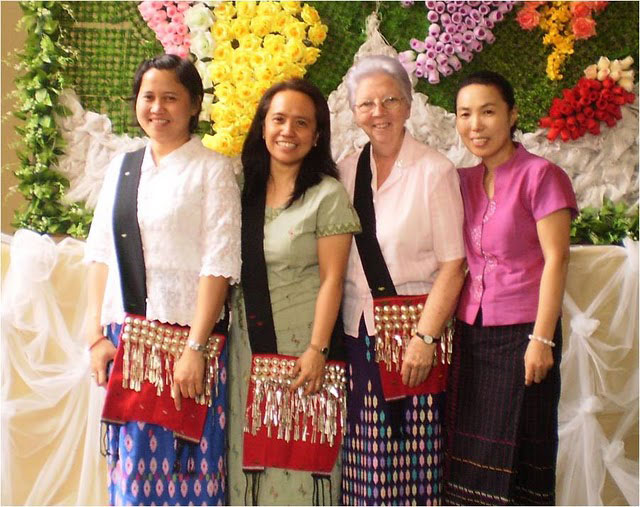
Columban Missionaries, Banmaw, Myanmar, 2011
L to R:
Sr Ashwena Apao (PH), Arlenne Villahermosa (PH), Sr Mary Dillon (Ireland) and Columba Chang (Korea)
Peru: the experience that changed my life
By Emmanuel Trocino

Welcome to Peru, Land of the Incas (‘Land of the Kings’). Many would say that you’ve never really been to this resplendent country until you’ve set foot in the majestic and incomparable Machu Picchu. I was able to visit this Incan legacy. But there’s more to Peru than just visiting its archaeological sites, being amazed at its mountains, jungles and deserts, and getting stuffed with local delicacies. If you stay awhile in Peru you will fall in love with its culture, its tradition, its faith and its people.
I am a Columban seminarian from Pulupandan, Negros Occidental, on First Missionary Assignment (FMA) in Peru. FMA is part of our formation as future Columban priests. We leave our homeland to taste what it’s like to be a missionary in a foreign land, crossing boundaries, experiencing an unfamiliar culture and encountering God in a new face and language.
On Mission
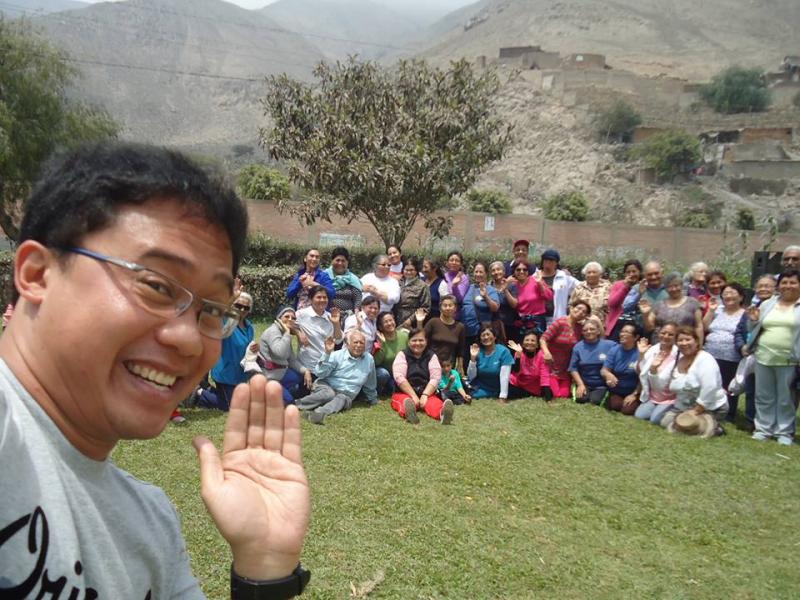
Emmanuel with the Animadoras of the Corazones Jovenes Program
What is missionary work like? Basically, you accompany different communities in the parish in their weekly schedule, do some apostolic work, and help in facilitating various parish ministries. If you are a priest you celebrate Mass and preach on important feast days.
A common notion is that missionaries do all the teaching and the people do the learning. In reality it’s mainly the other way around. It's the missionary who learns from the people: how to speak their language, how to adjust to their way of living, how to perceive and understand things from their point of view, how to recognize and experience God in their culture. (This reminds me of the experience of Jake Sully with the Na’vi tribe in the movie Avatar). It feels as if Peruvians have ministered to me more than I have ministered to them.
Being a missionary is very humbling. Like Moses, you step on sacred ground, remove your sandals, and encounter the Divine. Lately, I’ve been having that 'Moses experience': setting foot on the grounds of Guadalupe chapel, ‘emptying myself’ to our adultos mayores (older adults) and learning the virtues of patience, humility, and perseverance.
Serving the Little Ones
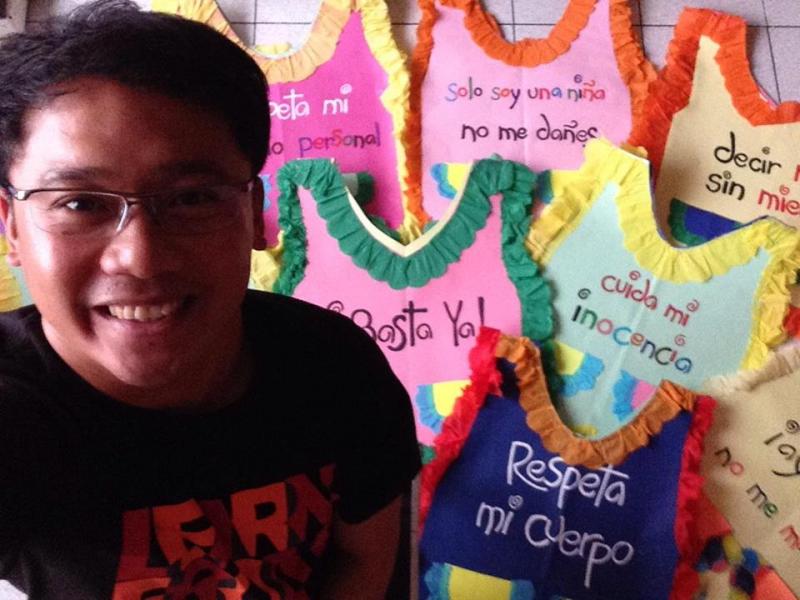
Aside from parish work, I also volunteer at a home for children who have been sexually abused. Sometimes I am their companion in play, sometimes their tutor, sometimes their artist drawing for their school projects and, occasionally, making birthday cards for their parents and teachers. With the passage of time, I have become their friend and big brother. Their happiness has become my happiness, their pain my pain.
As I watch them playing in all their innocence I wonder how those who abused them could have done such to these gentle souls. Instead of loving and protecting them, these people violated them and taught them to distrust the world around them. I want the children to be healed. I want them to love and trust again. I want them to live in a safe place where they can just be themselves, children. So in my own small way, I help in producing materials for the advocacy campaign of the home against child abuse. With the use of art, I hope that we can prevent such crimes and provide a secure home for the children and help them see that there are still bright colors in life.
Encountering the Moreno God
One of the interesting things about being in a different culture is that you get to observe, experience, and participate in the way the people celebrate their Christian Faith. You get to see God the way they see Him. It’s no surprise that popular devotions occupy a special place for Peruvians since they have five canonized saints. The devotions in honor of Sta Rosa de Lima – a secondary patroness of the Philippines – on 23 August and of San Martin de Porres on 3 November are two examples. And just as the Philippines has the devotion to the Black Nazarene every January, Peruvians observe October as the month of Señor de los Milagros de Nazarenas, the Lord of Miracles.
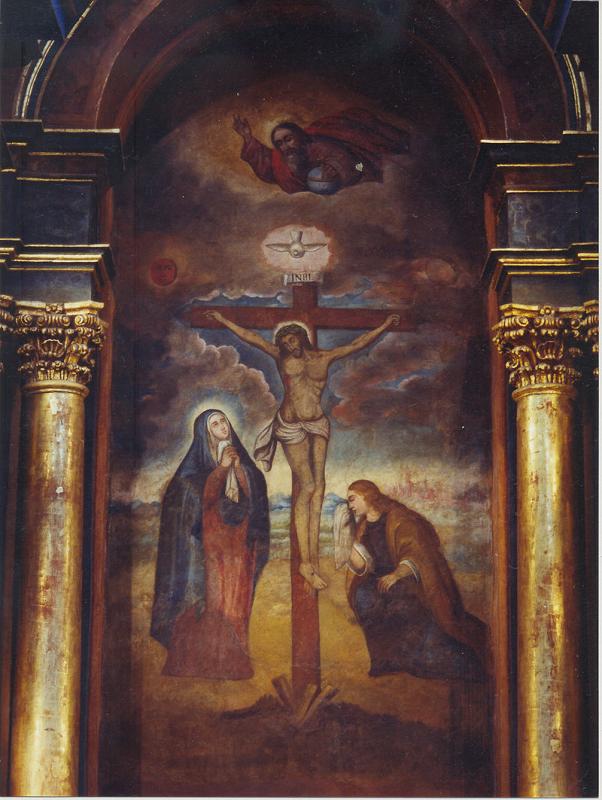
Senor de los Milagros,
Wikipedia.
The mural of Señor de los Milagros is in the Santuario de las Nazarenas in Lima. It remained standing after the deadly earthquake of 1655 that destroyed Lima. It was painted by a slave from Angola, Africa, who despite the repeated requests of the parish priest to show Christ as white, continued to paint the Lord as moreno (brown). Peruvians of African and of Andean descent, have always had a particularly strong devotion to the image. Through this painting the people were able, for the first time, to encounter the Lord as like them, moreno, and were able to identify themselves with God in a personal and intimate way.
Very often we tend to see Christ as having blue eyes, brown hair, and white skin, almost like a ‘perfect model’ endorsing some product. This can become a barrier for us in identifying ourselves with Him, in seeing Him as one of us. Whether Jesus looks exactly like his image in the painting in Lima, I don’t know. But I do know that the God who came among us 2,000 years ago as a Jewish man who loved and saved the people of Israel is the same God who came to save and love all of us.
Christ came for everyone, not only for a selected few. He is the God and Savior of people with white, dark and the copper-colored skin.
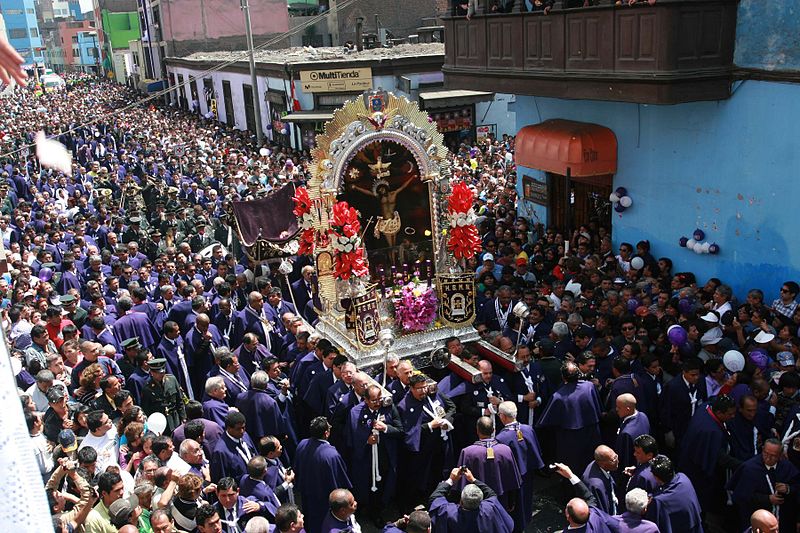
Señor de los Milagros Procession [Wikipedia]
I've been here for only a little more than a year but it seems that many years have already passed. I came to Peru with an idealistic dream of bringing change. But it's Peru that has changed me. It has taught me to see, experience, and celebrate life and God in a different way. It has changed my life in a way that I will never be my same old self again. And for that I will always be thankful to the people of Peru and to the One who brought me to them.
And with this thought, I can't help but remember a beautiful line from the musical Wicked that expresses this sentiment: ‘Who can say if I've been changed for the better? But, because I knew you, I have been changed . . . for good.’
St Columban, My Brother
Reflections of a pilgrim following in St Columban’s footsteps in 2008.
By Fr Ray Scanlon
|
A recent visitor to our editorial office in Bacolod City was Fr Raymond F. Scanlon, a Columban from Melbourne, who worked for many years in Korea. He is the current Vice-Director of the Region of Australia and New Zealand. We published this article five years ago but it is very appropriate for the 1,400th anniversary of the death of St Columban in Bobbio on 23 November 615.
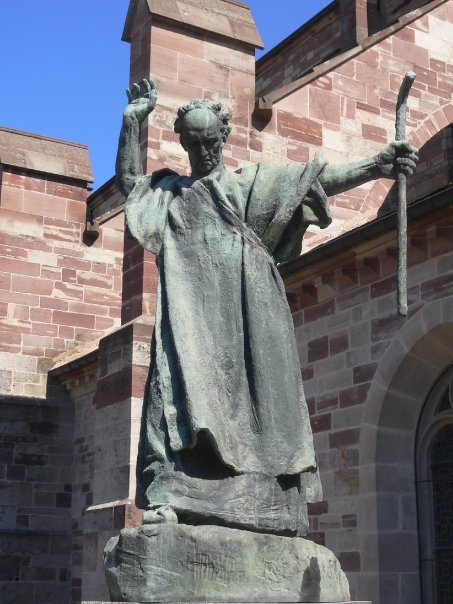
Until I did the pilgrimage I did not know much about St Columban. To me he was a mythical figure of ages long ago. One who was not so human and who had extraordinary powers, superhuman ideals and expectations.
As we travelled in St Columban’s footsteps we heard a number of accounts of his life. I began to understand and admire him. He became alive and real rather than a distant historical figure.
At the beginning of the pilgrimage our leader Fr Derry Healy said, ‘We are a group of lay people, Sisters and priests hoping to be touched by the people, places and cultures where St Columban travelled, setting up schools and monastic communities at the end of the sixth and the beginning of the seventh centuries.’
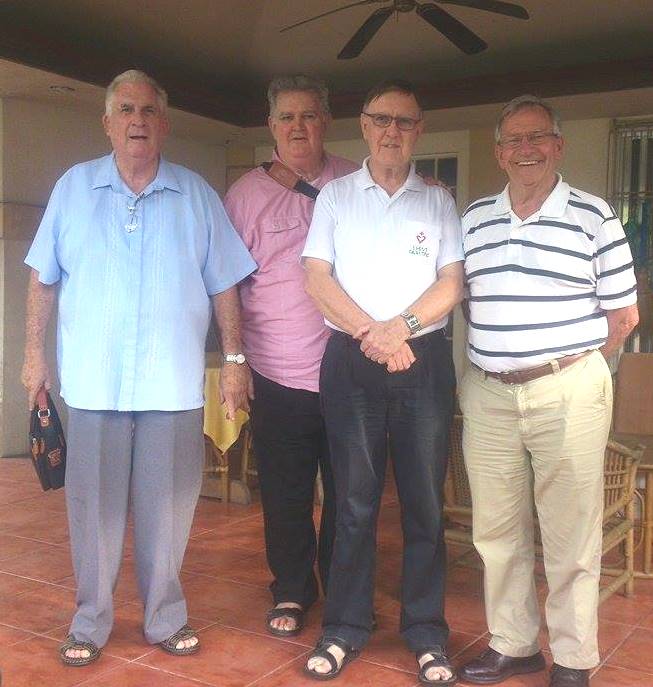
Columban Fathers Brian Gore, Dominic Nolan, Sean Coyle and Ray Scanlon
Bacolod City, October 2015
The highlight of the pilgrimage was offering Mass with my classmate, Fr Brian Gore, on the occasion of the 40th anniversary of our ordination. We celebrated beside St Columban’s tomb in the crypt of the basilica in Bobbio, Italy. I had feelings of gratitude to God, to my family, Columbans, the people of Korea, the benefactors of our mission Society and to St Columban himself.
Through the pilgrimage I have come to know St Columban as someone I could pray to in a personal way.
Reverence for St Columban
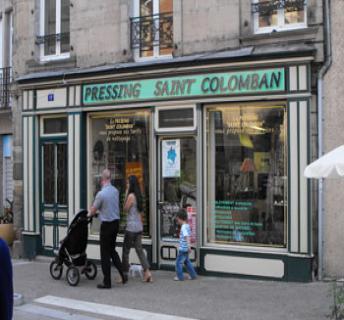
I was surprised at the way the people of Europe: Germany, France, Austria, Switzerland and Italy remember and revere St Columban today. His name is everywhere - mountains, streets, towns, churches, orchestras and businesses. Even the dry cleaning shop and a lingerie boutique in Luxeuil near his former monastery are named after him. There are groups of people in these countries called Les Amis de Saint Colomban (Friends of St Columban) in Luxeuil, Baden-Baden (Germany), Olivone (Switzerland), Breganz (Austria), and in several towns in Italy, who keep his memory and his spirit alive.
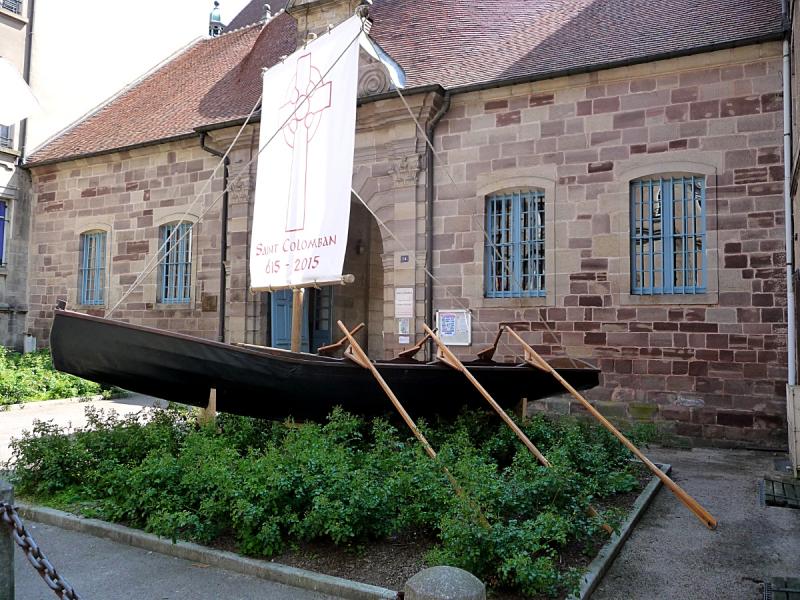
A currach in Luxeuil
St Columban and his companions quite possibly traveled in such a boat, made from canvas and still used in the west of Ireland.
We travelled by bus and a few sections on foot. St Columban did most of his travelling by foot and during his life covered amazing distances. He also travelled by boat; his original journey was by sea from Ireland to mainland Europe, down the Loire River in present day France and later by the Rhine to Austria. He was 70 years of age when he walked across the Alps into Italy.
St Columban loved nature
We found that St Columban had a strong relationship with nature. He regularly walked up mountains to spend time in prayer and reflection there. Images show him with a sun on his breast and a dove on his shoulder. Scholars today still research the influence he may have had on St Francis of Assisi.
Young men flocked to receive an education from St Columban who was highly educated. The rule he wrote for his monasteries was notorious for its severity, particularly the acts of penitence imposed for infractions.
One of the valuable teachings that appealed to me is the link between love and respect for the Eucharist with the practice of love and respect for one’s brothers and sisters.
We are truly blessed to have St Columban as our patron, our model.
This article first appeared in The Far East, the magazine of the Columbans in Australia and New Zealand.
The Subanens Live the Christmas Story
By Fr Vincent Busch

The Gospels give us a good idea of the joys, fears and struggles that Mary and Joseph experienced that first Christmas. Jesus was born after his parents had walked 100 kms often over rugged terrain. Mary gave birth in a stable because there was no room for them in the Inn. Then, after visits from shepherds and wise men, Mary and Joseph had to flee to avoid Herod’s soldiers. Over the past several decades the Subanen people have experienced similar joys, fears, and struggles. When Subanens hear the Christmas story they say Joseph and Mary are like us.
The Subanens are an indigenous people who live in the forested mountains of the Zamboanga peninsula in the Philippines. For centuries they fished, hunted, gardened and foraged for their food, medicine and household needs. They also formed a close spiritual relationship with their tropical habitat and they celebrated that relationship in song, dance, and ritual. Since the 1950s land-hungry settlers from other parts of the Philippines pushed the shy Subanens deeper into the forest. In the 1960s and 70s logging companies chain-sawed their forest. Then in the 1970s and 80s armed conflict broke out in the peninsula as government and anti-government forces carried out military operations which often included indiscriminate killing. And now mining companies want to bulldoze their remaining habitat. Slowly the Subanens are being evicted from their forest home. The 'inn-keepers' of extractive industries and of warring political factions have no room for the Subanens in their world.
Responding to the beauty and to the pain of the Subanen people, the Columban Sisters started the Subanen Ministry. For 35 years the Sisters have worked with Subanen elders and leaders to find healthy and sustainable ways to protect, nurture and celebrate the Subanen culture and their endangered habitat. In 2001, with the help of the Subanen Ministry, I began working with Subanens to form a livelihood project by which they could use their traditional crafting skills to make saleable jewelry, mandalas, children’s books and cards. Income from the Subanen Craft project helps the Subanen artists provide food, education, housing and health care for their families. This income is especially useful during the 'hunger season' which is the lean time between harvests.
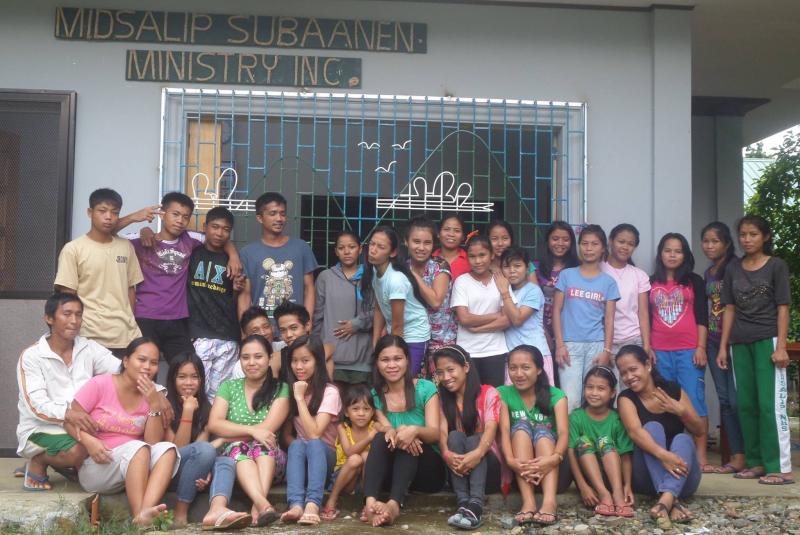
Over the years the Subanen artists have crafted Christmas cards whose subject matter connected their experiences with the experiences of Mary and Joseph in Bethlehem. My contribution to the card-making process is to listen carefully to the Subanens and to study their habitat. Then, with their corrective help, I draw and re-draw card designs until we agree that the images were true to the Christmas story and true to the Subanen story. Then, after the finished designs are printed on card stock, the Subanen artists transform the images into works of art. With colored pencils they carefully tint each mountain, hill, and stone, and with razor-sharp blades they cut out each human figure and in lay the figures with colored paper. Each year it takes us about two months to design the cards and another five months to craft them.
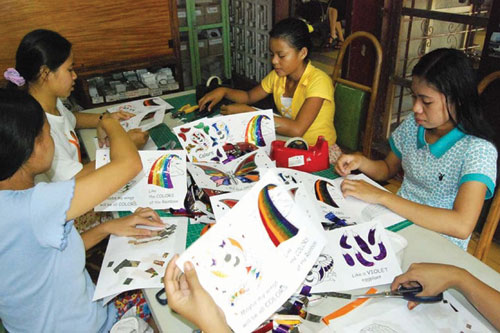
Here are four examples of how the Subanens found the Christmas story in their lives:
- Subanens walk daily over precarious mountain trails and so we created cards that highlighted how Joseph and Mary carefully helped each other and their donkey through the rugged hills to Bethlehem.
- Like Mary, Subanen women also give birth in simple shelters with their farm animals kept safely nearby. Subanens know that, in such circumstances, a mother needs supportive care and so we created cards that portray a helpful Joseph who cleaned the stable, repaired the manger, gathered firewood, fetched water, made a warming fire, cooked a meal and watched over Jesus as Mary rested.
- Subanens have seen armed men killing innocent people, and they know the fear and sorrow of having to evacuate their homes and farms to save themselves and their children from such killings. And so we created cards that drew attention to the journey of a frightened Mary and Joseph as they fled Herod’s soldiers to save their child.
- Subanens know that the food they eat, the water they drink, the homes they build, the air they breathe and the beauty they behold depend on the health of the soil, rivers, plants and animals of their habitat. They know their habitat is a gift from God. And so we crafted cards that joyfully say “thank-you" to God whose humble birth on Earth invites them to live humbly with the Earth.
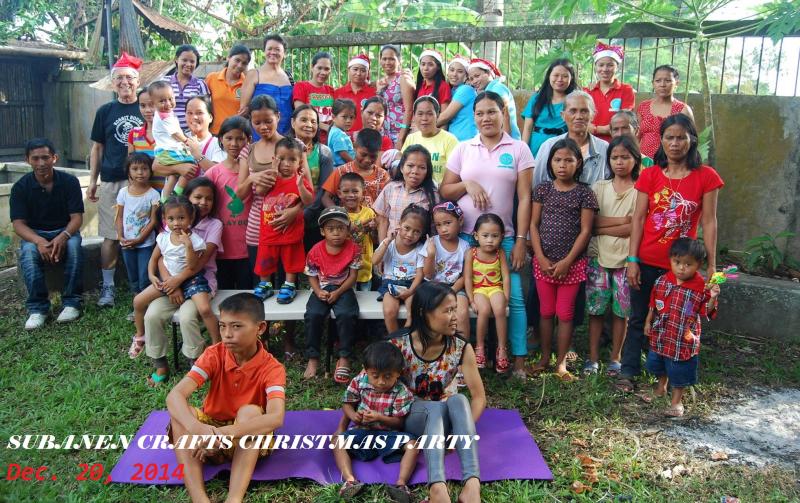
My years with the Subanen artists have been a meditation about living within the grace of God’s creation. It has been a mutually beneficial experience. The Subanen families get to work in a project that provides them with modest livelihoods and I get to behold the miracle of creation through the eyes of a people who are gracefully cooperating with that miracle. Indeed, our planet with all its interconnected habitats is the ongoing miracle through which God gives food to the hungry, drink to the thirsty, and a hospitable home to all.
Columban Fr Vincent Busch has been a missionary in the Philippines since
1974. He currently works with the Subanen people of Mindanao, Philippines.
See the crafts and cards of the Subanens on their website: www.subanencrafts.com
.

